Or more exactly: If you’re shooting your lens stopped down (f/4–f/8) anyway, does it make any sense to use fast lenses?
If you’ve hung out with photographers (either virtually or IRL), you are sure to have heard opinions on this topic. What makes these opinions interesting is that many of those photographers have a strongly held views, usually backed up with logically sounding argumentation and (at best) anecdotal evidence. And as so often happens, they do not agree. Let me summarise the key points of the arguments (without indicating that I subscribe to either contention).
Warning: I could have written an easy, clickbait-y article but instead I decided to take the question seriously. This means that what you’re reading is a combination of a discussion on optics with some of the key principles of the philosophy of science. This also means that we will need to settle on a set of terms:
Terminology
Contention 1: faster lenses are sharper when stopped down.
Those photographers supporting this contention usually support their viewpoint using the following arguments:
- Faster lenses are more expensive lenses, sold primarily to pros and aficionados. Often these are also halo lenses (they are crucial for the manufacturer’s reputation). As a result the designs are more thoroughly considered, materials are better and quality control is superior. Hence faster lenses perform better at medium apertures.
- Faster lenses are stopped down more (at, say, f/5.6) than a slower lens. Therefore, all those aberrations that are mitigated by stopping down (including astigmatism, comatic aberration, field curvature, longitudinal chromatic aberration, spherical aberration, vignetting) are effectively addressed more extensively. Hence faster lenses perform better at medium apertures.
- Faster lenses are more demanding to design and extra care needs to be taken to designing lenses to minimise wide open aberrations. Faster lenses therefore use more elaborate glass mixtures, more complex designs (higher element count) and the highest quality coatings. Hence faster lenses perform better at medium apertures.
- Faster lenses are more valuable, and their owners take better care of them. As a result they have not been knocked around and have received regular maintenance. Hence faster lenses perform better at medium apertures. (admitted: this is an argument that applies only to used/old lenses).
Contention 2: slower lenses are sharper when stopped down.
Also photographers supporting this viewpoint can put forward logical arguments in favour of their theory, including:
- Faster lenses are designed towards the elusive goal of large maximum apertures, so they are naturally optimised for wide-open performance, whereas slower lenses are designed for performance at modest apertures. In other words: when used at medium apertures, slower lenses are closer to their intended millieu. Hence slower lenses perform better at medium apertures.
- Faster lenses – to be able to be fast – are designed at the bleeding edge of what lenses can achieve. As a result of this, they often introduce aberrations that even stopping down more cannot adequately address. Two key arguments often made here is that faster lenses tend to have more longitudinal chromatic aberrations, more field curvature and more geometric distortions and that even stopping down to medium apertures will not address these. Hence slower lenses perform better at medium apertures.
- Faster lenses use more glass elements, all of which increase the risk of introducing more aberrations, more flaring and more spherical aberrations. Hence slower lenses (with their lower element count) perform better at medium apertures.1
- Faster lenses are usually owned by pros and have suffered heavy use whereas there are good chances of finding very sparingly used slow lenses. Hence your chances of finding a slower lens in perfect condition are considerably higher than with a faster lens. (Again: an argument that applies only to used/old lenses).
As you can see, both sides manage to marshal logical seeming arguments in favour of their position. And – as of then is the case – all of these arguments can be valid (true) at the same time. The real question is: does the higher quality materials and more elaborate designs outweigh the benefit of a design that does not need to stretch towards elusive goals?
Empiricism to the rescue?
If you’ve ever had even a brush-pass with western philosophy of knowledge (the field that discusses what has to happen before we can say that we have arrived at knowing), you’ve maybe heard of the tug of war between two schools of thought: rationalism vs. empiricism (and rationalists and empiricists)
Rationalists think that new knowledge can be developed through logical thinking and argumentation alone whereas empiricists think that logic can only produce hypotheses, but knowledge can be developed only through empirical evidence2.
So if we’re dealing with one plausible argument that says F > S, because X, Y & Z, and another plausible argument saying S > F, because M, N & O, an empiricist would comment that these both are nice theories, but would then go on to demand to see your data.
However, empiricism is not simple to do well3. Allow me to illustrate:
I) If I’d pitch a 85/1.4 mm lens against a 50/1.8 and a 28/2.8 mm lens would you consider the results to reflect the maximum aperture?
➡ Focal length has to be very close for comparisons to make sense.
II) If I’d pitch a Nikon 50/1.2 against a Konica 50/1.4 and a Soligor 50/1.8 would you consider the results to reflect the maximum aperture?
➡ Lenses have to be from the same manufacturer.
III) If I’d compare a SMC Pentax-A 50mm F1.2 (from 1984) against a SMC Takumar 50/1.4 (1972) and a 55 mm f/2.2 Auto-Takumar (1965) would you consider the results to reflect the maximum aperture?
➡ Lenses have to be from the same era.
IV) If I’d pitch a Canon FD 50/1.2 Aspherical (and not the vanilla 55/1.2) against a vanilla Canon FD 50/1.4 would you consider the results to reflect the maximum aperture?
➡ Lenses should be using comparable technology.
V) If I’d compare trio of Canon Chrome nose standard lenses (a 55/1.2 a 50/1.4 and a 50/1.8) but the 55/1.2 had separation, the 50/1.4 had fungus and the 50/1.8 was mint, would you consider the results to reflect the maximum aperture?
➡ Lenses should also be in comparable shape.
Moreover: Say I compare three lenses that fulfil all the above mentioned requirements: they have the same focal length, they’re from the same manufacturer and the same era and do not differ in any other significant way. Assume that this test shows that a wider maximum aperture correlates with better sharpness at medium apertures. Have we just proven that brighter lenses produce better images when stopped down, or have we merely found an indicator of what design philosophy that manufacturer applied during that era. So to be able to say anything solid, we would need to test lenses from several manufacturers.
If you feel I’m placing unrealistic demands in order to make empirical comparison impossible, then no.
The whole point of empiricism is to – as far as possible – avoid the need to rationalise. If you’re forced to try to logically explain why a lens with fungus (or an older lens, or a different brand lens …) makes a comparison-worthy data point then you’re again resorting to rationalism. The demand for trying to compare lenses where the only significant difference is in the maximum aperture is to be able to find empirical evidence – one way or the other – to answer the question: “Are faster lenses sharper at medium apertures?
I do understand that few people have a lens catalogue that fulfils all these criteria for comparison, but I do have enough lenses that I managed to find two trios of lenses that satisfy all those criteria as well as a number of duos. Some of these4 will be analysed below.
- 4 x Nikkor 35 mm (35/1.4 Ai; 35/2 Ai; 35/2.8Ai; 35/2.5 E)
- 2 x Carl Zeiss Contax 50 mm (50/1.4 and 50/1.7)
- 2 x Nikkor 28 mm (28/2 K and 28/3.5 K)
- 2 x Canon chrome nose 35 mm (35/2 chrome nose (concave) and 35/3.5 chrome nose)
- 2 x Carl Zeiss Contax 35 mm (35/1.4 Distagon and 35/2.8 Distagon)
- 2 x Carl Zeiss Contax 85 mm (85/1.4 Planar and 87/2.8 Sonnar)
- 3 x Olympus normal lenses (OM 55/1.2; 50/1.4; 50/1.8)
Test 1: 4 X Nikkor 35 mm
The first test focuses on comparing 4 different Nikon/Nikkor 35 mm focal length lenses. These have all been selected based on meeting following criteria:
• They all share the focal length of 35 mm
• They all have different maximum apertures (f/1.4; f/2; f2.5 and f/2.8)
• They all come from a similar era.
While the Ai 35/1.4, 35/2 and 35/2.8 make up a clear ‘series’ of good, better and best, the 35/2.5 is an outside offering, very much intended for a new, budget/economy market. I am including it here for flavour, not so much as a data point that one should pay too much attention to.
The table below summarises key details about each lens.
| Mainline specs | Nikon F subtype | lens Introduced | design introduced | Length x diameter | Weight | Elements / Groups | Data sheet |
| Nikkor Ai 35/1.4 | Ai | 1977 | 1975 | 62,5 x 67,5 mm | 404 g | 9e / 7g | here |
| Nikkor Ai 35/2 | Ai | 1977 | 1965 | 52,5 x 63,5 mm | 282 g | 8e / 6g | here |
| Nikkor Ai 35/2.85 | Ai | 1977 | 1974 | 44,5 x 63,5 mm | 242 g | 6e / 6g | here |
| Nikon E 35/2.5 | series E (Ai-s) | 19796 | 1979 | 34,9 x 62,4 mm | 151 g | 5e / 5g | here |
I was not in the city when taking the images this test (instead, I was in the Finnish countryside), but a 200 year old log building’s wall is just as good as a brick wall (as long as you’re okay with not being able to measure distortion). The image below shows the entire scene as well as the relative positions from where the respective 400 x 400 px crops have been taken.
In all cases focus was set wide open at the centre crop area and not adjusted thereafter.
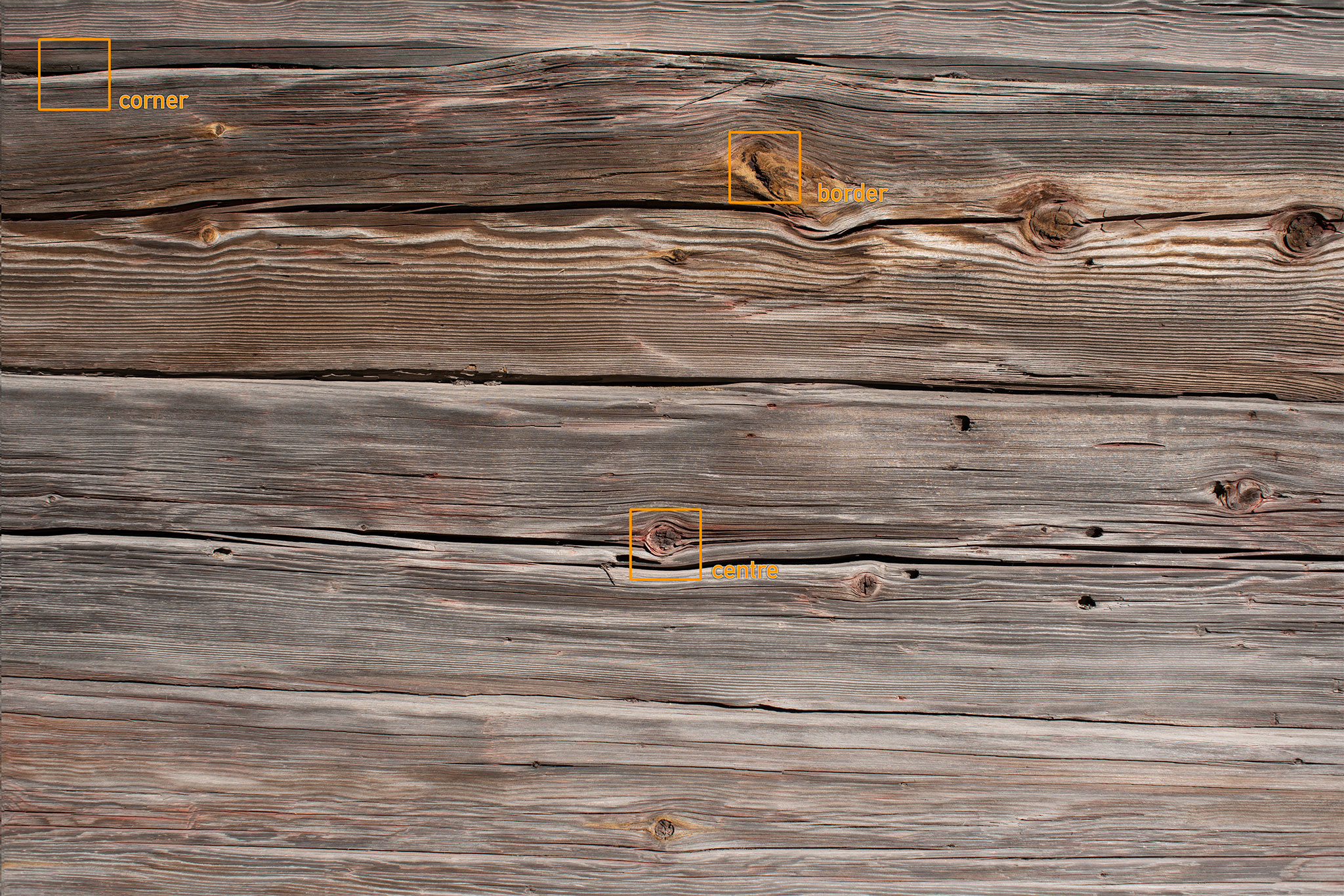
(open image in new tab for larger image)
All images taken with Sony ⍺7R2 on tripod with IBIS off, 2 second delay, 4400 K colour temperature and ISO 100
Centre crops

(open image in new tab for larger image)
Short analysis (more thorough later): In all cases the Series E is clearly least sharp. Otherwise it gets a bit more complicated. At f/4 and f/5.6 the 35/2 and 35/2.8 are sharpest, with the 35/1.4 coming in ahead of the 35/2.5. At f/8 the 25/1.4, 35/2 and 35/2.8 are about equally good, still a bit ahead of the 35/2.5.
Border crops

(open image in new tab for larger image)
Short analysis: All in all this set can clearly divided in two groups: the winners and losers. The winners are the 35/1.4 and 35/2.8 while the losers are the 35/2 and the 35/2.5. Among the winners the 35/1.4 is a bit sharper at f/4 and f/5.6, while the 35/2.8 is sharpest at f/8. Among the losers the 35/2 is consistently better than 35/2.5.
Corner crops
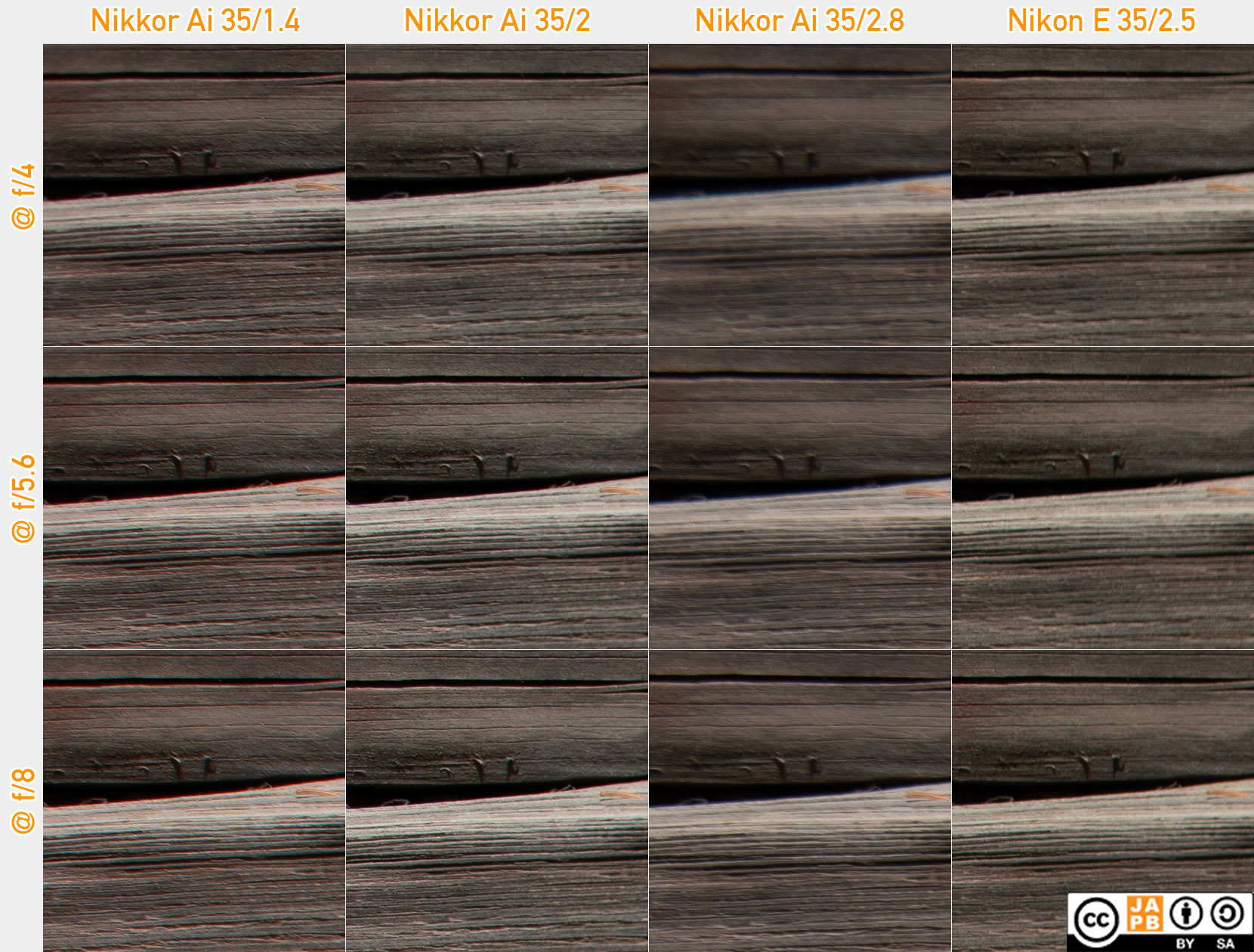
(open image in new tab for larger image)
Short analysis: The 35/2.8 is clearly last at all apertures.
At f/4 the f/1.4 is best, followed closely by the f/2 and the series E.
At 5.6 and f/8 the f/2 is a bit ahead of the f/1.4, with the series E trailing both (but clearly ahead of the f/2.8).
Collected analysis: Besides that the E series 35/2.5 is the weakest lens in almost all tests, the rest is not so simple. To put it bluntly, among the f/1.4, f/2 and f/2.8 there is not one lens that is the clear winner in all situations: In terms of centre crops the f/2 and f/2.8 win. In the case of border crops the f/1.4 and f/2.8 win. With the corner crops the 35/2.8 is dead last while the f/1.4 and f/2 sharing the top spot.
Are faster lenses sharper? This test is inconclusive.
Test 2: Two 50 mm Carl Zeiss (Contax) lenses.
On the one hand, you might think that there is not much of a difference in these two lenses. I beg to differ. Firstly, there have been millions of amateur photographers over the decades who have wondered if they should upgrade their nifty fifty for a fast fifty. Similarly there have been dozens of pundits who have stated that nifty fifties tend to be sharper stopped down than their faster brethren.
Second, while a half-stop difference (or so) might not seem as much (certainly we have lenses being compared here that have two full stops of difference), it is very common for nifty fifties to use a different optical recipe compared to their faster siblings. Some examples below:
• Canon nFD 50/1.8 (6e/4g) vs. Canon nFD 50/1.4 (7e/6g)
• Carl Zeiss Jena Pancolar 50/1.4 (6e/5g) vs. Carl Zeiss Jena Pancolar 55/1.4 (7e/5g)
• Konica AR 50/1.7 (6e/5g) vs. Konica AR 50/1.4 (7e/6g)
• Minolta MD-I 50/1.7 (6e/5g) vs. Minolta MD-I 50/1.4 (7e/5g)
• Nikkor Ai-s 50/1.8 (6e/5g) vs. Nikkor Ai-s 50/1.4 (7e/6g)
• Olympus OM 50/1.8 (6e/5g) vs. Olympus OM 50/1.4 (7e/6g)
• Pentax-M 50/1.7 (6e/5g) v. Pentax-M 50/1.4 (7e/6g)
• Topcon.RE 58/1.8 (6e/5g) vs. Topcon.RE 58/1.4 (7e/5g)
I could go on, but the main point is that in most cases manufacturers have achieved that extra half (or so) stop by adding a lens element to the basic recipe of the nifty fifty. Considering that the system’s basic nifty fifty typically is as symmetrical a lens that the system in question is likely to have, that added element is not two more air-glass boundaries, it is also an unbalanced element.
Anyway, I digress. Below are the basic specs for the two tested lenses.
| Mainline specs | AE/MM | lens introduced | Sample produced | Length x diameter | Weight | Elements / Groups | Data sheet |
| Carl Zeiss Contax 50/1.4 | AE | 1975 | 1977 | 41,0 x 63,3 mm | 273 g | 7e / 6g | here |
| Carl Zeiss Contax 50/1.7 | AE | 1979 | 1981 | 37,8 x 61,9 mm | 179 g | 7e / 6g | here |
Not only are these two fifties a rare combo of fast and nifty fifty in that they share the same element/group count, it is almost as if the Carl Zeiss (Contax) 50/1.7 was introduced as an afterthought.
Finally, while these both are “50 mm” lenses, that is not quite true. As evident even from Zeiss’ own data sheets, the actual focal length of both these lenses is closer to 52 mm (51,8 mm for the 50/1.4; 51,9 mm for the 50/1.7)
Let’s start analysing some images. The image below will show you the origin of the various crops.
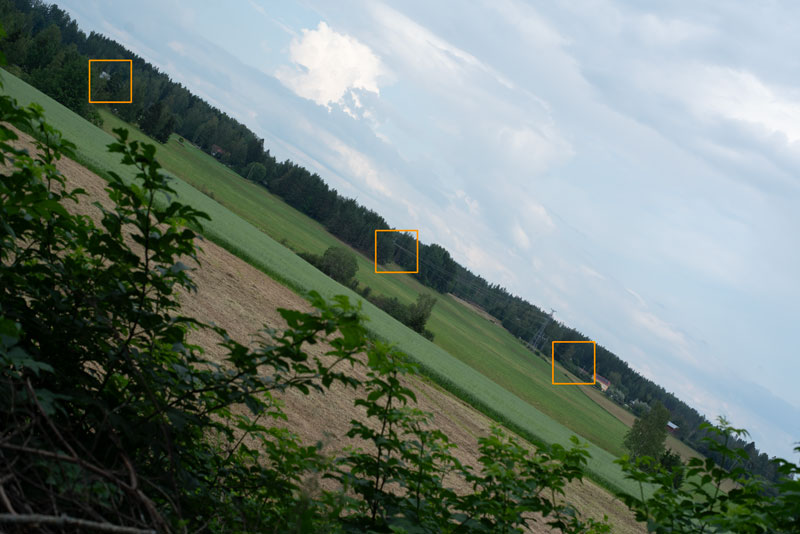
Centre crops
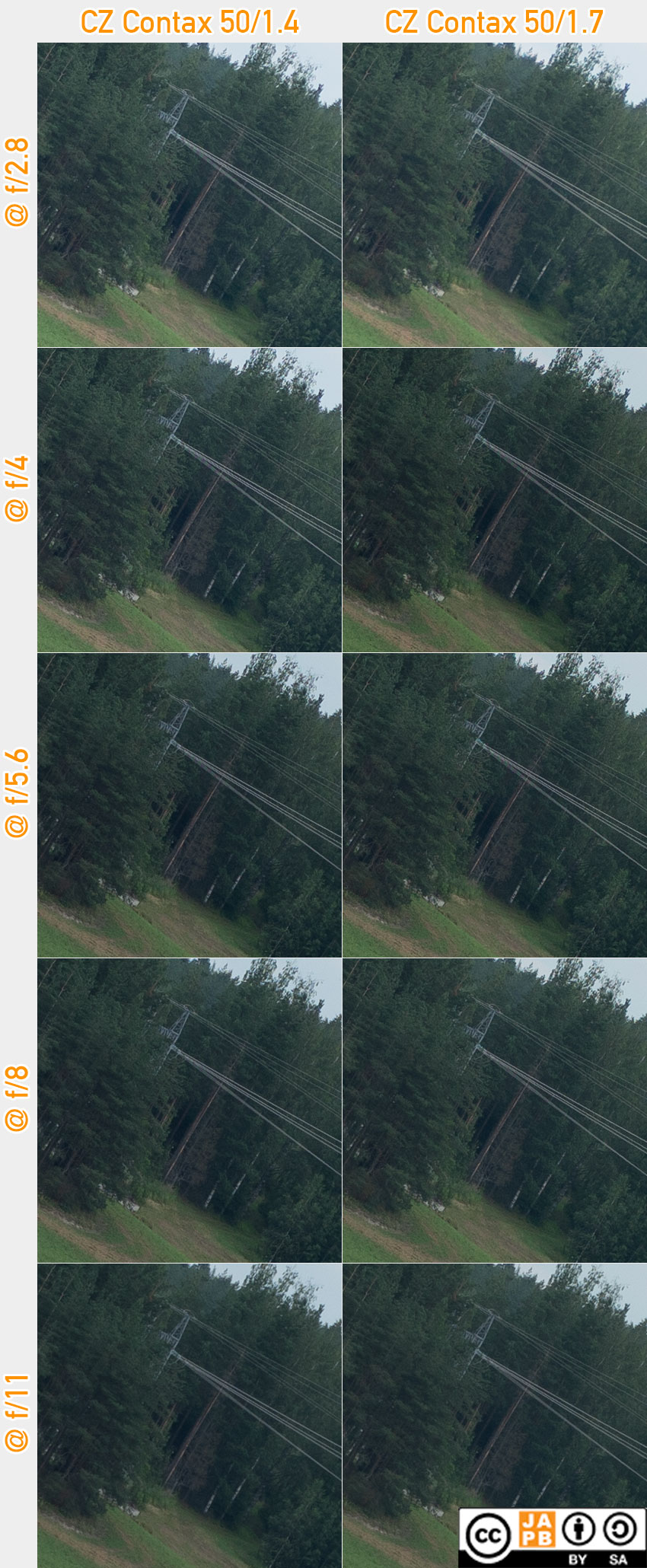
Short analysis (more thorough later): All in all, the differences are slight (which is to be expected considering that these are stopped down centre crops from a standard lens). The only really noteworthy result is that both lenses produce less contrast in the image centre at f/2.8 than f/4 (from where on the results are largely unchanged). That loss of contrast is likely the result of some remnants of spherical aberration.
In any case, the differences are too small to call a sharper lens.
Border crops
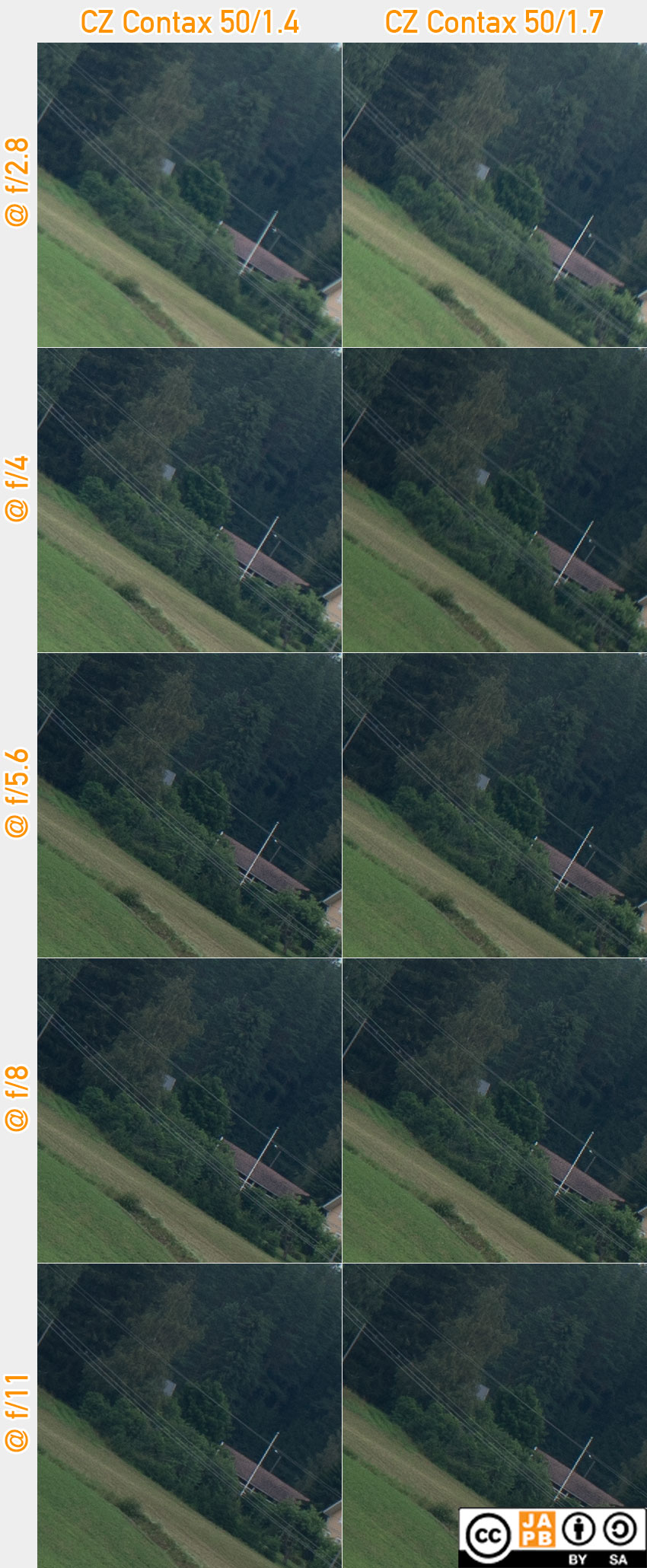
Short analysis: Again, the differences are rather minor, but this time they are clear enough for me to say something clearly.
First: As with the centre crops, there is a loss of contrast at f/2.8, but this time it’s clear that the f/1.7 has a mildly lower loss of contrast and that while the issue is resolved for the f/1.7 by f/4, the 50/1.4 has a bit of loss of contrast even at f/4. So at f/2.8 and f/4 the 50/1.7 Planar is a bit better.
After f/5.6 the tables turn as the faster 50/1.4 is able to pull more detail and tonal richness out of the various tones of green (see for instance the foliage behind and to the left of the flag pole). The difference is slight, but it is there.
Peak sharpness is at f/8 as after that diffraction starts eating into the sharpness on both lenses.
Corner crops
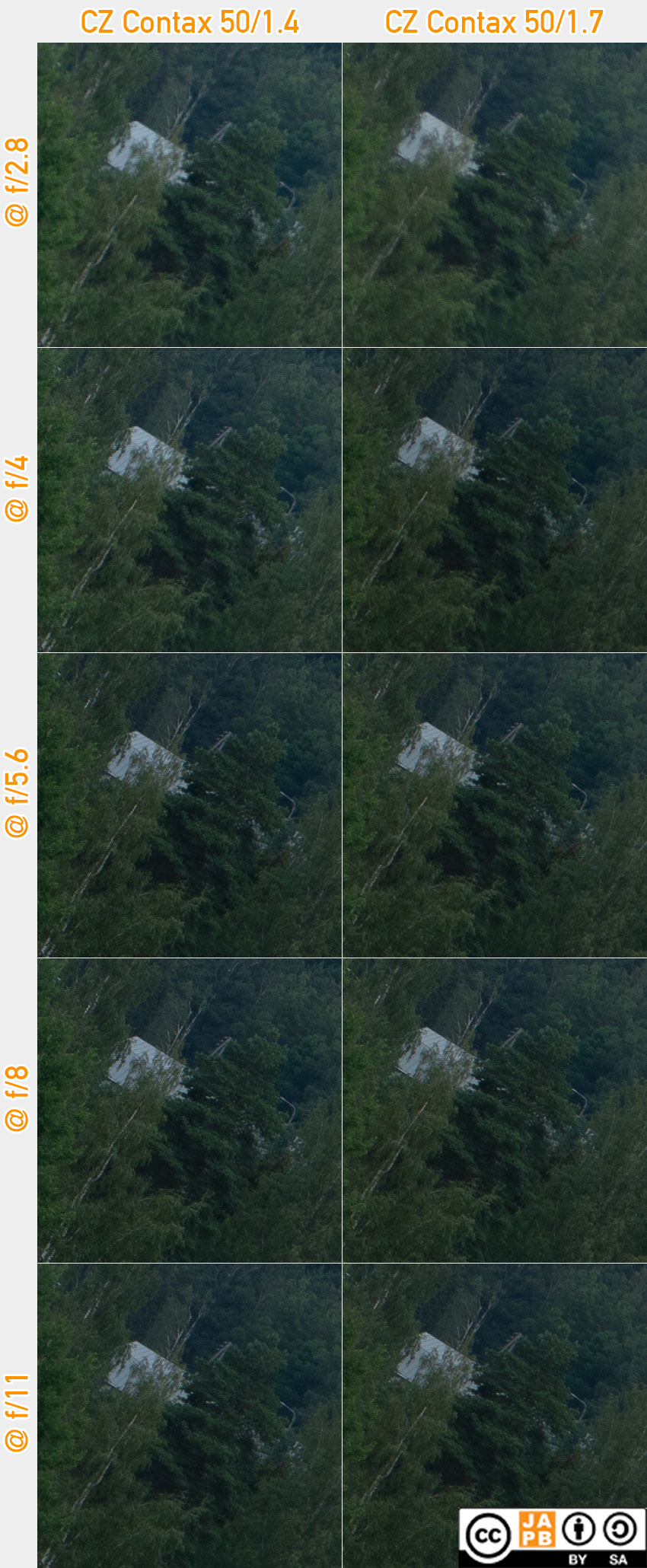
Short analysis: As with the border crops, there is a loss of contrast at f/2.8, but this time it is also accompanied by loss of definition. Also it is clear that the 50/1.7 suffers a bit more than the f/1.4.
From f/4 onward both these lenses produce decent corner crops (actually I’d say that that both lenses produce above average corner crops), but in this comparison it is clear that the faster lens holds a consistent minor advantage both in terms of contrast and definition.
Collected analysis: These are two very evenly matched lenses (in the f/2.8–f/11 range), and while the slower lens is not without its advantages, the overall win goes to the faster (50/1.4) lens due to its better ability to pull detail and reproduce tonal nuances in the off-centre areas.
Are faster lenses sharper? This test would say Yes, but the difference is small.
Test 3: Two 28 mm Nikkors
I happened to have two comparable era 28 mm Nikkor lenses lying around, so I thought to put them to the test.
| Mainline specs | Nikon F subtype | lens produced | design introduced | Length x diameter | Weight | Elements / Groups | Data sheet |
| Nikkor K 28/2 | K | 1975-77 | 1975/ | 58,5 x 64,5 mm | 355 g | 9e / 8g | here |
| Nikkor K 28/3.5 | K | 1975-77 | 1975 | 41,8 x 63,3 mm | 228 g | 6e / 6g | here |
While Nikon has been producing 28 mm f/2 lenses since 1970 and 28 mm f/3.5 lenses since 1960, both these K-type designs are significantly redesigned from their C-type predecessors. While the design used by the 28/2 remained largely unchanged going forward to Ai and Ai-s type lenses (and being discontinued as late as 2005), the design used by the 28/3.5 was significantly overhauled going from this K-type lens to the next Ai-type lens.
I initially pointed the lens at an artificial cliff face, because I did not want to shoot just another brick wall, even though I knew that the mild unevenness in the structure might exacerbate any effects that field curvature might have. On the other hand, with these lenses being wide-angle lenses (and resultantly having a considerable depth of field) the level of unevenness should not be of great effect.
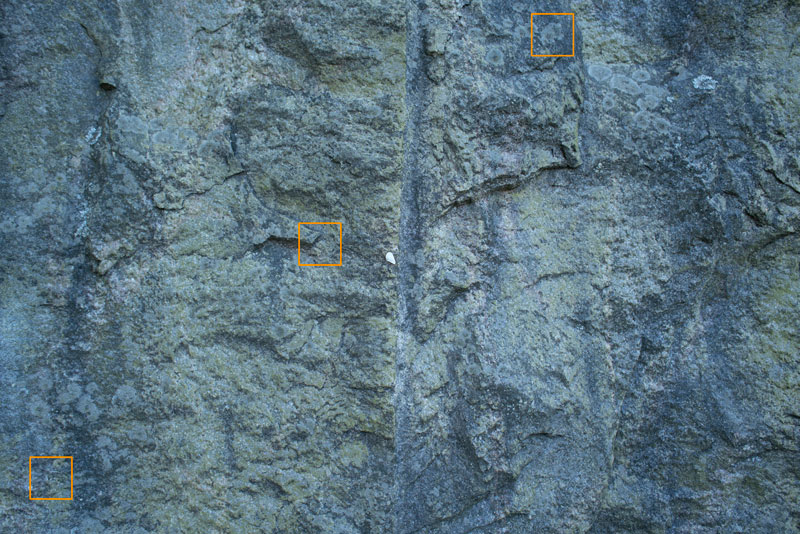
Centre crops
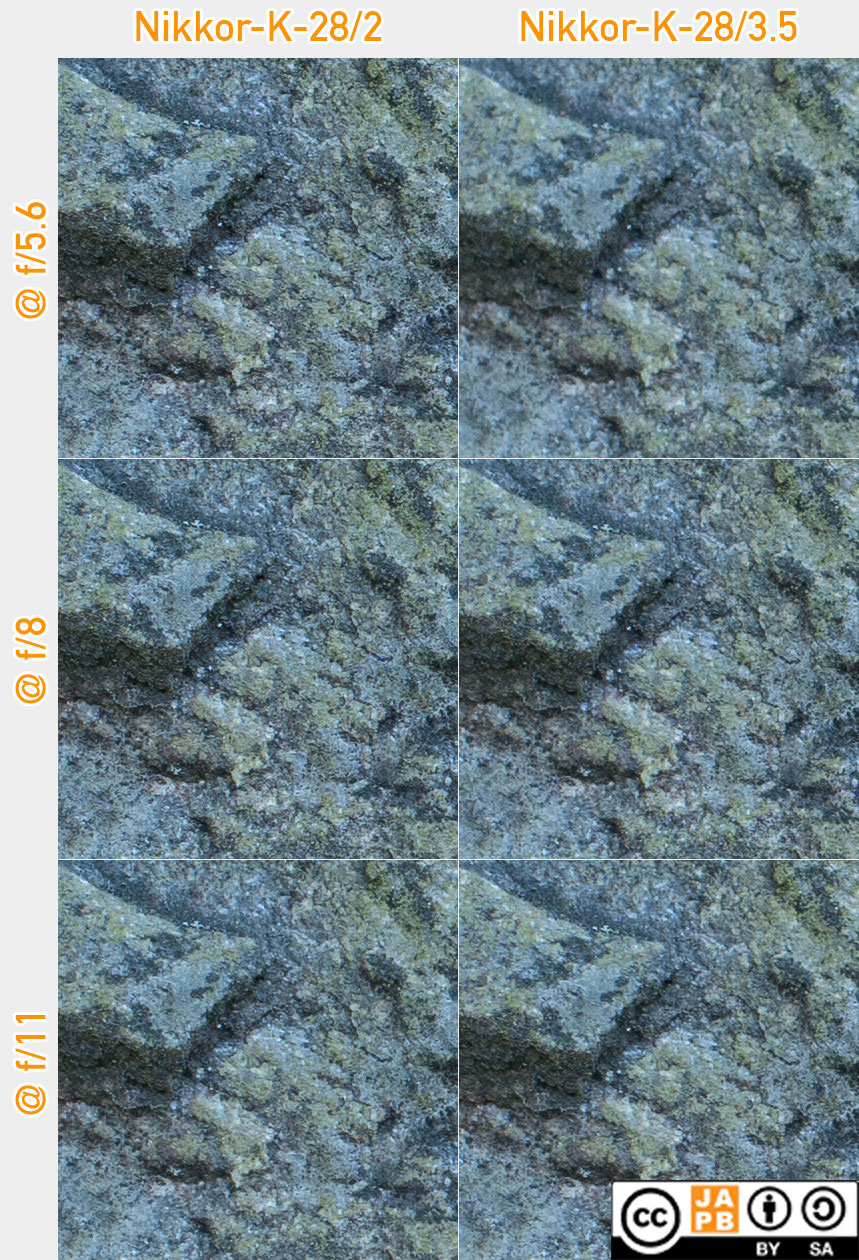
Short analysis (more thorough later): The brighter lens (28/2) is consistently shaper in these centre crops than the 28/3.5. This is blatantly evident at f/5.6, but is also easily discernible at f/8 and f/11.
Border crops
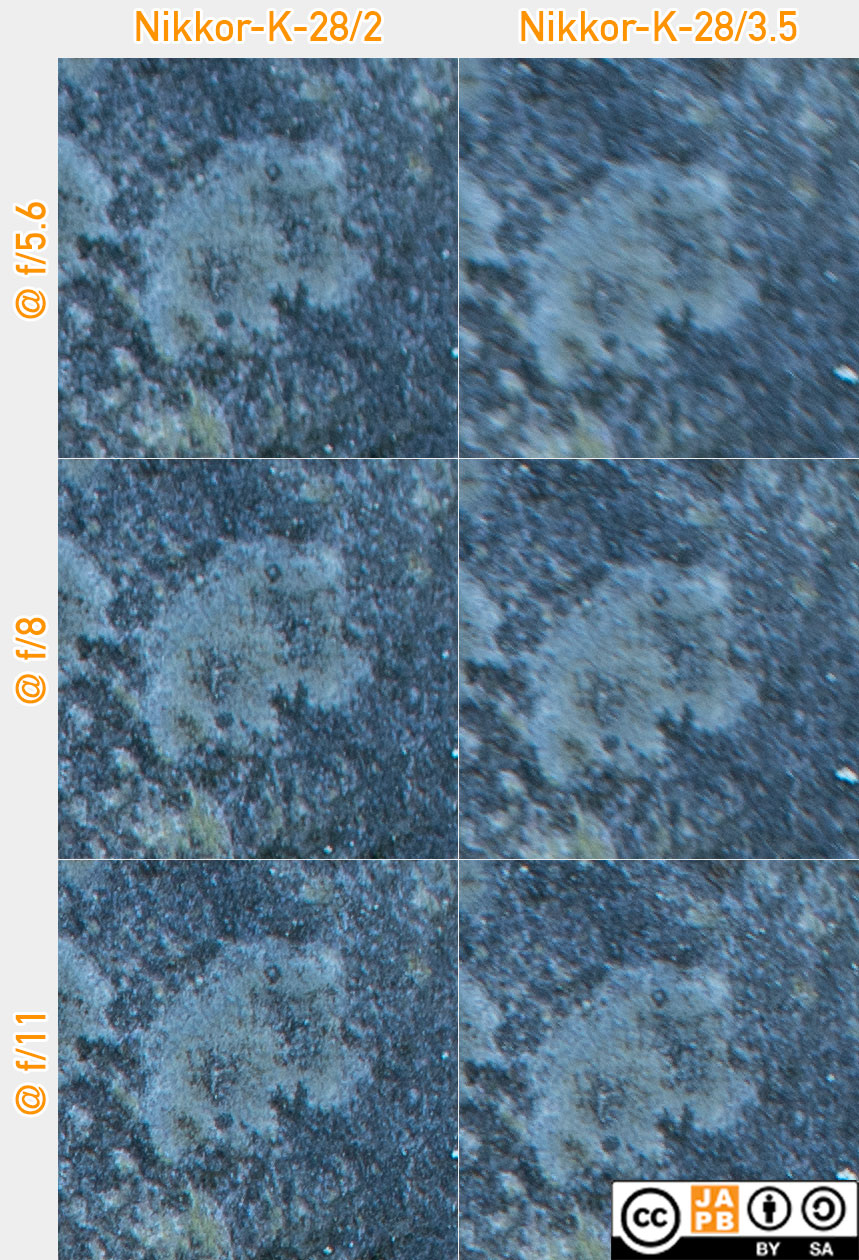
Short analysis: The 28/2 is again consistently shaper in these border crops than the 28/3.5. The difference is furthermore more significant than in the centre crops.
Corner crops
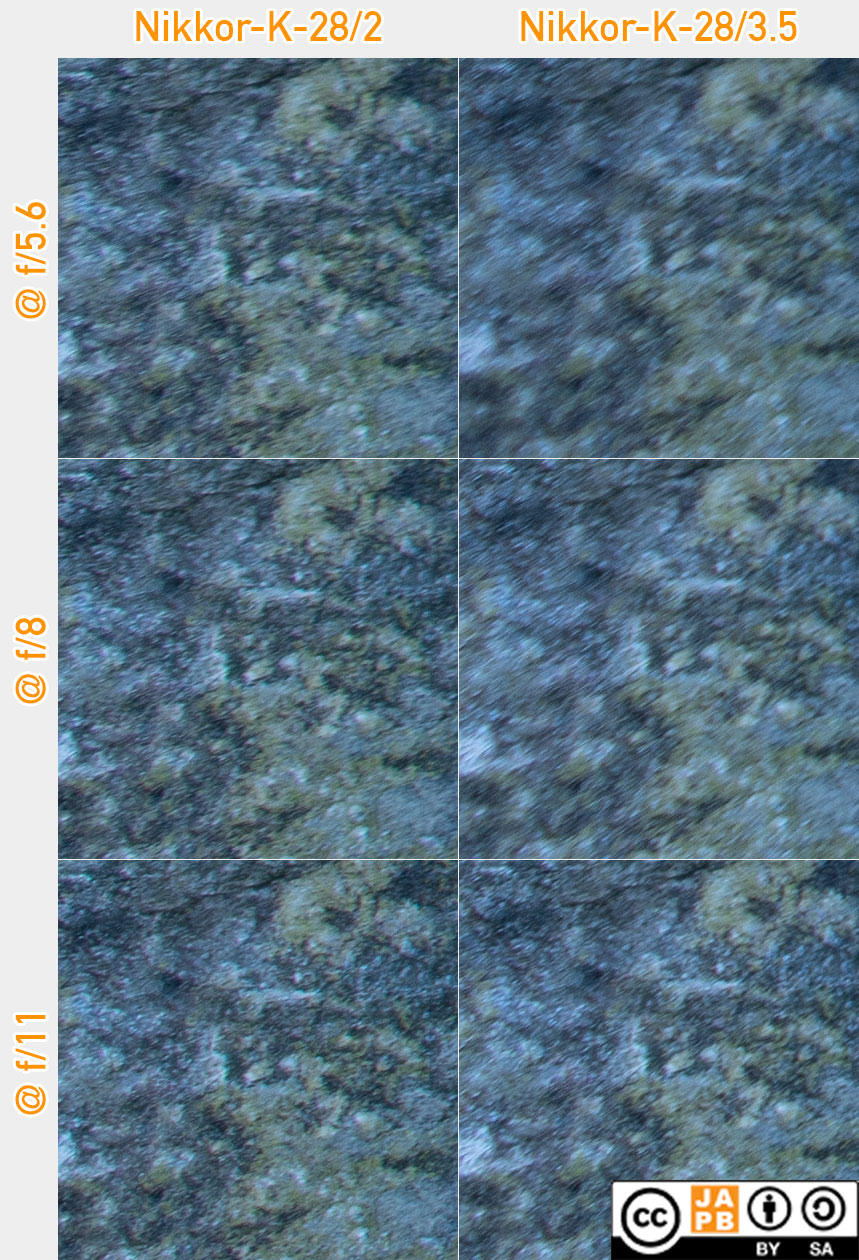
Short analysis: The 28/2 is again consistently shaper in these border crops than the 28/3.5. At f/5.6 and f/8 the 28/3.5 shows significant corner smearing, which – given that we’re dealing with a lens designed for use on SLR cameras7 – would indicate considerable astigmatism (in this case tangential astigmatism).
Please note! At this stage I wanted to double-check my imagery, so I went back out and shot a brick wall.
Two 28 mm Nikkors – redux with a brick wall.
This is the brick wall in question:
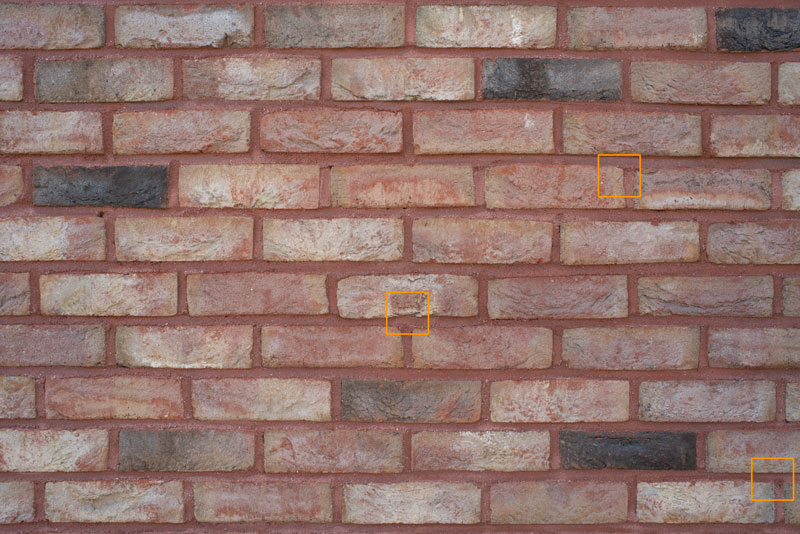
Centre crops
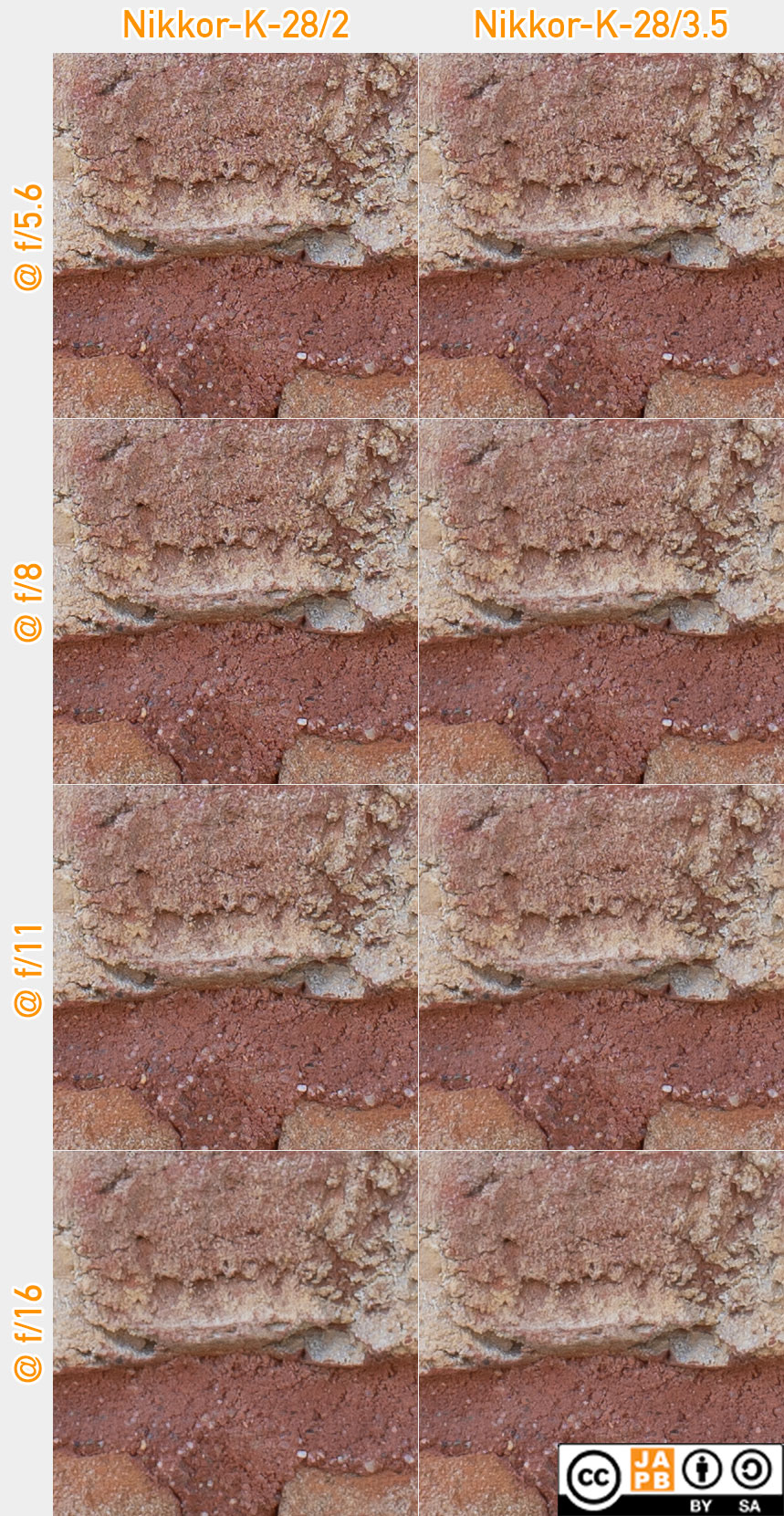
Short analysis (more thorough later): From f/5.6 to f/11, the brighter lens (28/2) is consistently a bit shaper in these centre crops than the 28/3.5. This is most evident at f/5.6, but is also easily discernible at f/8 and f/11. At f/16 diffraction eats into the results of both to such a degree that they are equal.
Border crops
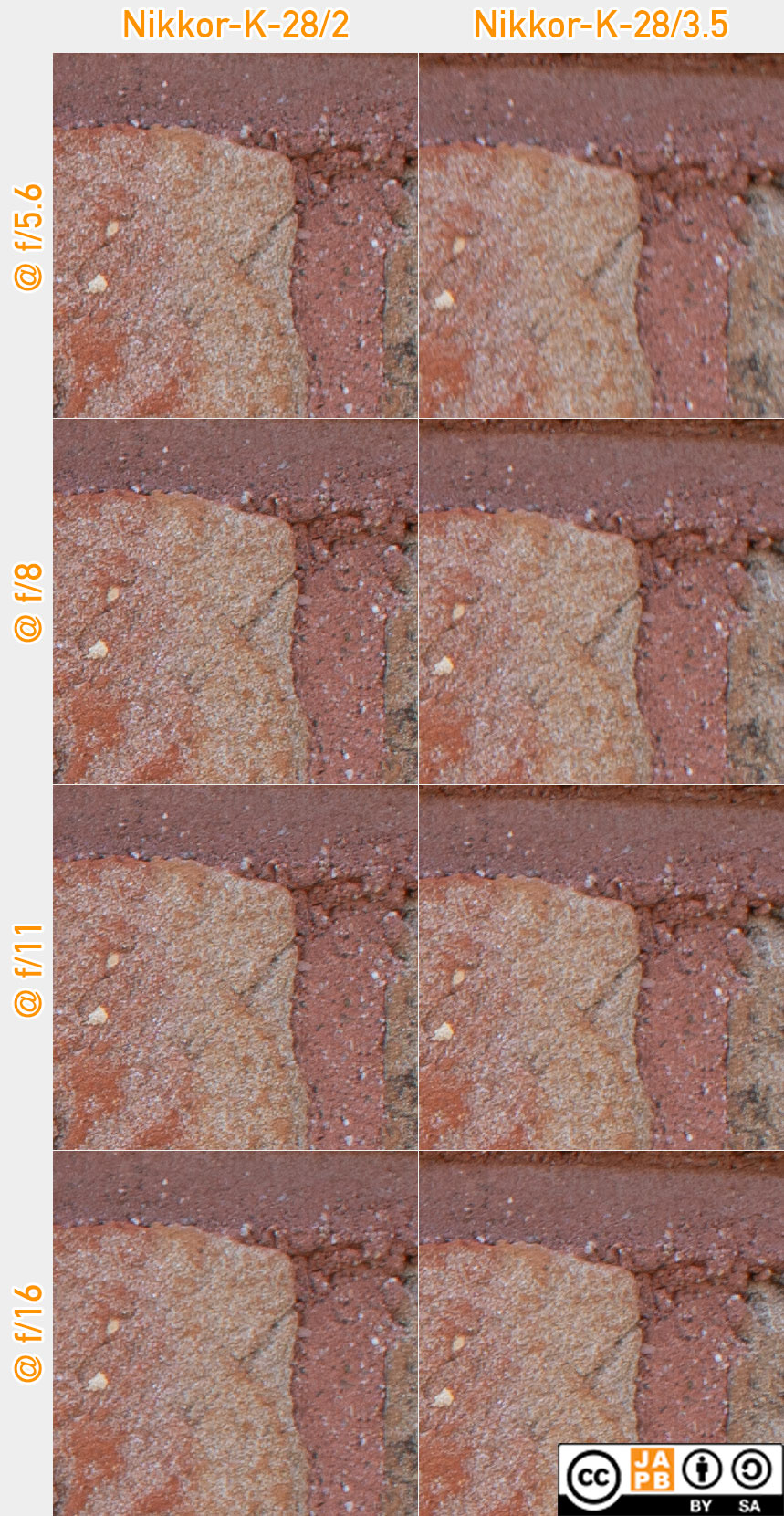
Short analysis: In the border crops from f/5.6 to f/11, the brighter lens (28/2) consistently outperforms the 28/3.5 and at f/5.6 and f/8 does so by a considerable margin. At f/16 diffraction eats into the results of both to such a degree that they are equal.
Corner crops
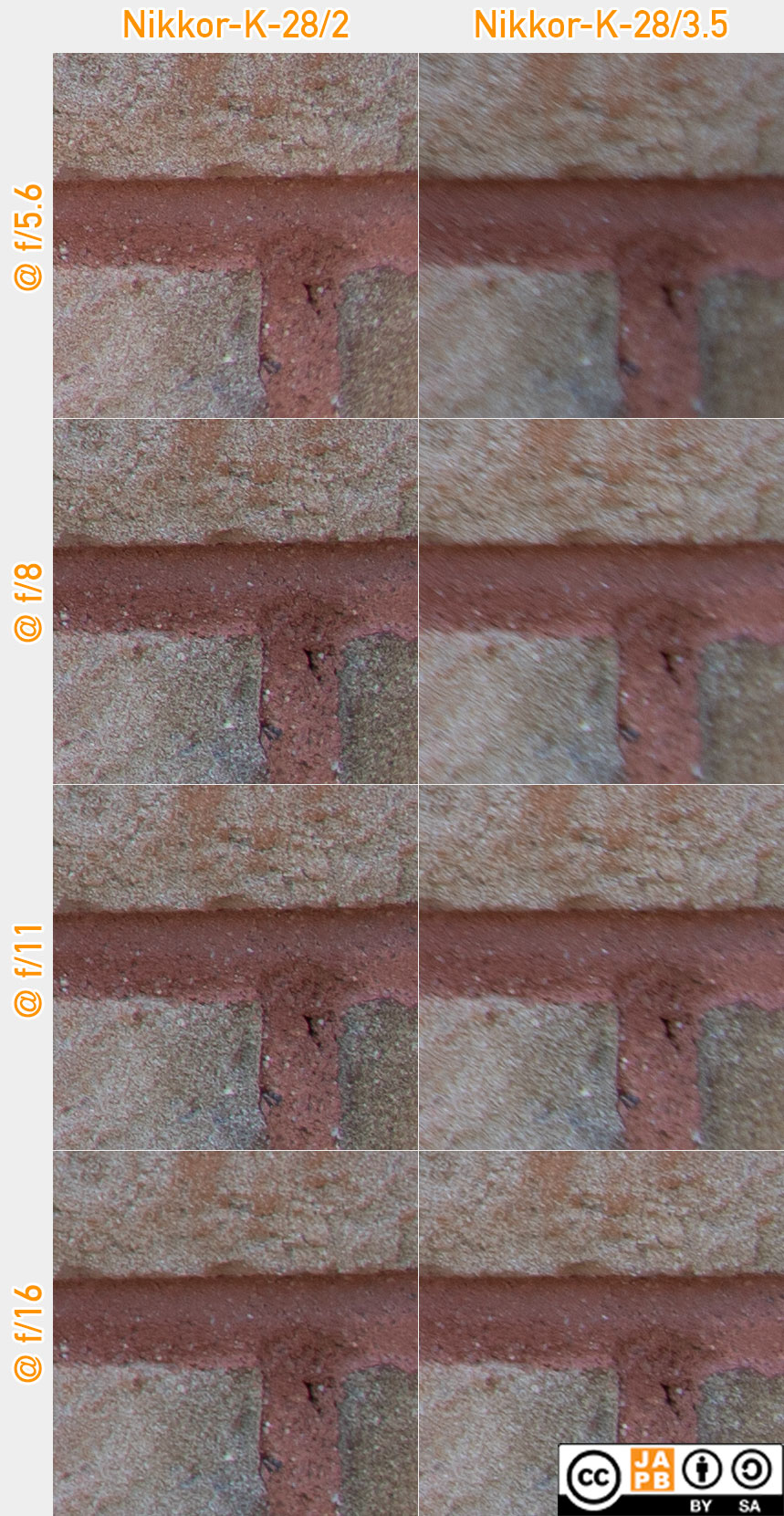
Short analysis: 28/2 wipes the floor with its slower sibling. At f/8 the 28/2 is corner-to-corner sharp, whereas the 28/3.5 does not manage to produce good corners at any aperture
Collected analysis (based on both the cliff face and the bricks): The slower 28/3.5 manages to put up a fight in the centre crops, but loses even there. In off-centre/border areas there is no contest and in the corners it’s a rout. The only positive thing that I can say about the off-centre performance of the 28/3.5 is that it might work sufficiently well on an APS-C size sensor.
Are faster lenses sharper? This test says Definitely YES!
Test 4: Two 35 mm chrome nose Can(n)ons
The era of the FD mount (1971–1987) was a time for rapid development for Canon, with many lenses going through several iterations in that timespan. However, the initial set of chrome nose lenses (1971–1973) constitute a solid set of similar era lenses. As I happen to have both the fast and the slow 35 mm focal length lenses offered as chrome nose lenses, they deserve to be included here..
| Mainline specs | Canon FD subtype | lens produced | Length x diameter | Weight | Elements / Groups | Data sheet |
| Canon FD 35/2 ‘concave’ | chrome nose | 1971-73 | 52,4 x 66,7 mm | 511 g | 9e / 8g | here |
| Canon FD 35/3.5 | chrome nose | 1971-73 | 51,6 x 64,9 mm | 339 g | 6e / 6g | here |
It seems to me that Canon during the early 70s thought that what photographers secretly wanted was to build muscle as Canon chrome nose lenses are consistently among the heaviest representatives of their respective categories. Also here, these are the heavies legacy era 35/2 and 35/3.5 lenses that I own.
Another noteworthy aspect is that in the 35/2 we’re dealing with a sample of the ‘concave’ 35/2, in other words a lens with a concave front element (rare) and which is radioactive. While radioactive lenses generally do not harm your health (read more here), many radioactive lenses have yellowed over time, and that is especially true for this sample.
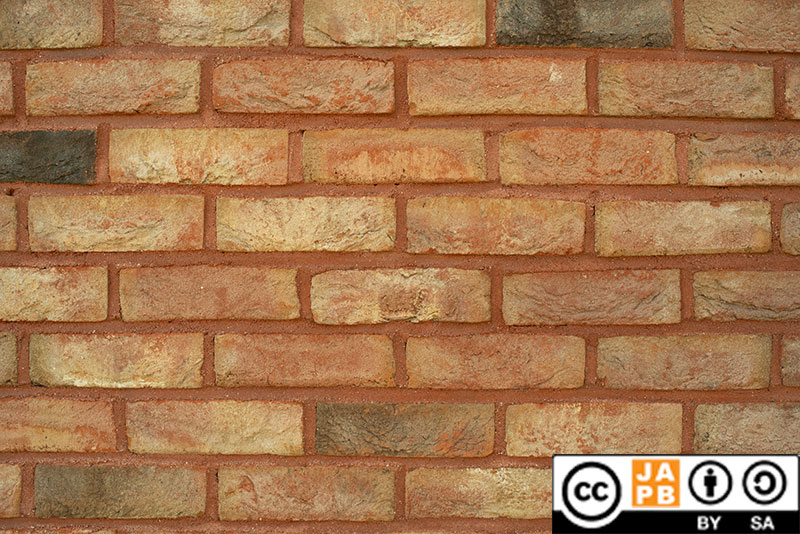
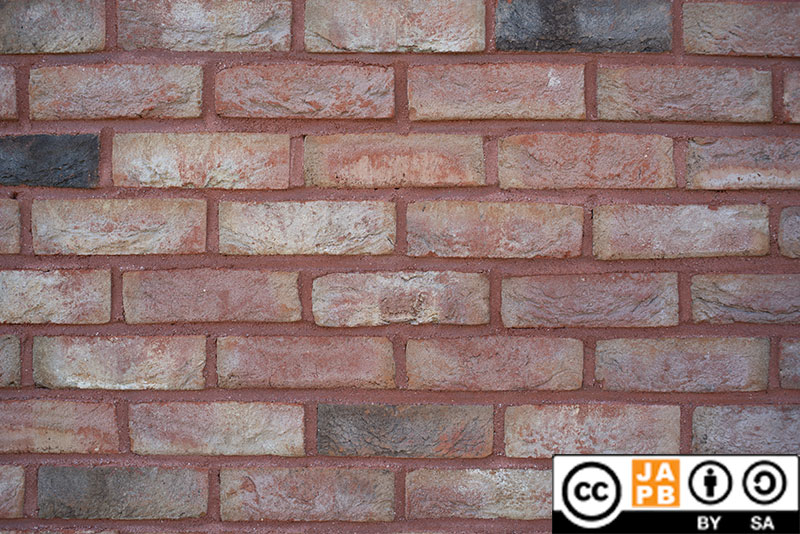
After: Canon FD chrome nose 35/3.5
Note: Both images shot with WB ‘sunny’ preset so this is really the difference produced solely by the lens.
Because it might be difficult to focus on differences in sharpness between the two images due to the very different coloration, all images will be converted to black and white (using ACR’s B&W preset, so neither lens is deliberately benefitted) before analysis. You can see the locations of the various crops below.
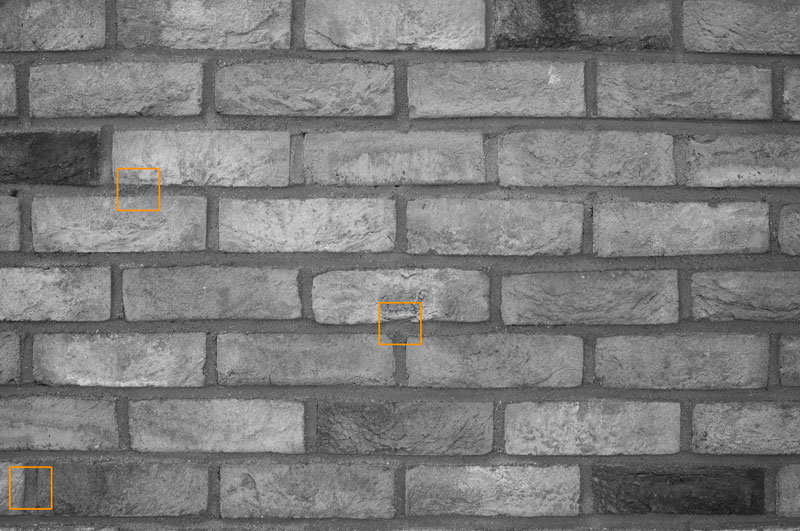
Centre crops
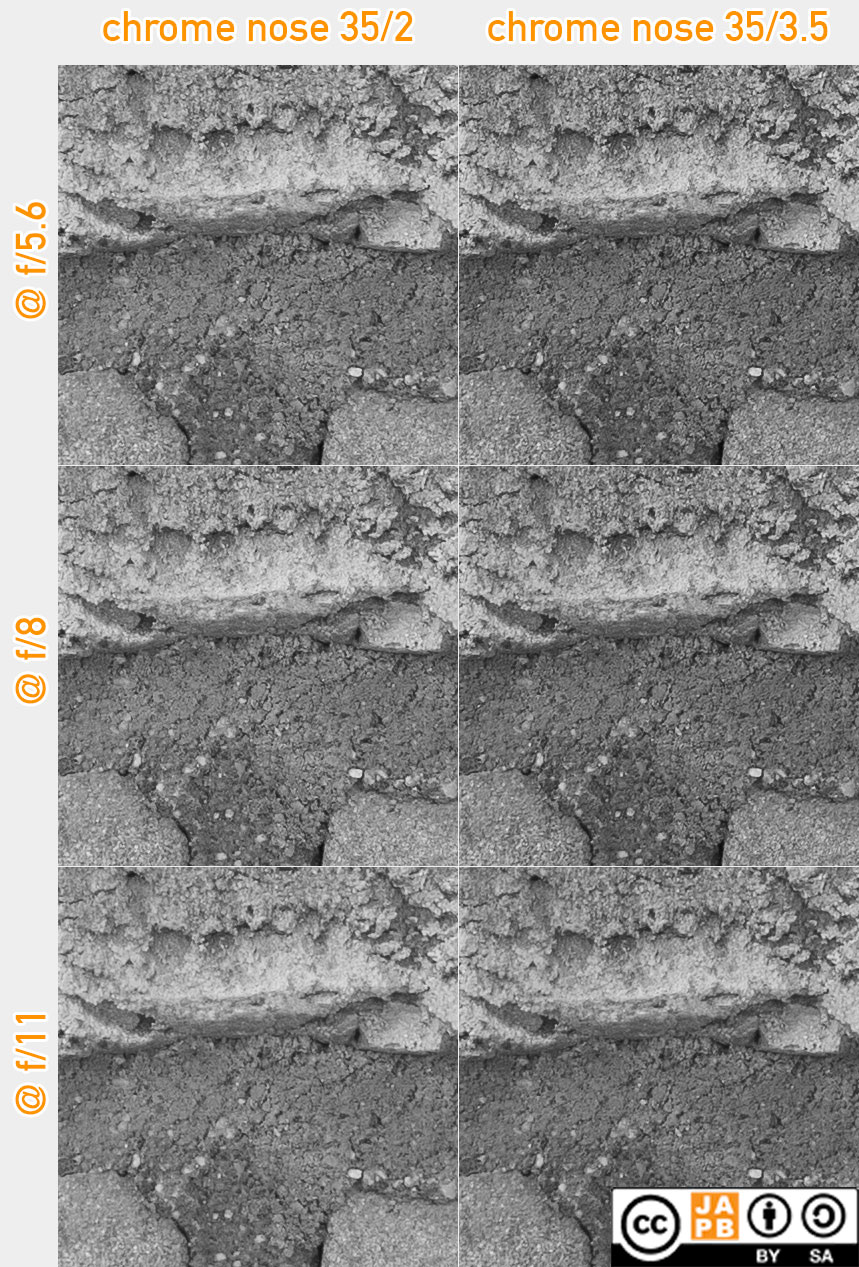
Short analysis (more thorough later): These are both very sharp lenses (in the centre) and while the definition of both lenses is stellar throughout the tested range, the contrast offered in the crops of the 35/2 is noticeably weaker. This however is likely due to the yellowing and the (unceremonious) B&W conversion and could likely be significantly improved with a more customised B&W conversion.
Border crops
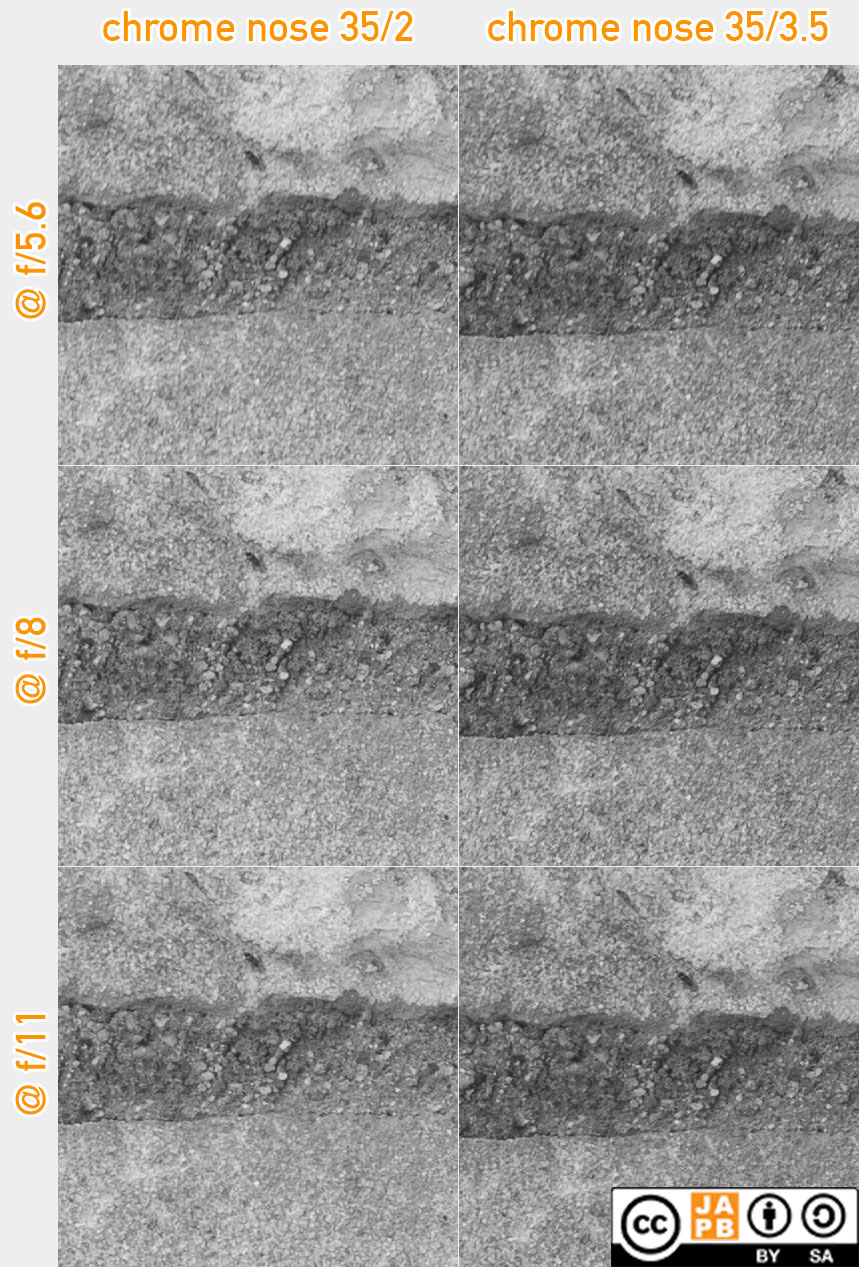
Short analysis: Again, both lenses put up a convincing show. While the definition of both lenses is stellar throughout the tested range, the contrast of the crops of the 35/2 is again weaker. This however is likely due to the yellowing and the (unceremonious) B&W conversion and could likely be significantly improved with a more customised B&W conversion
Corner crops
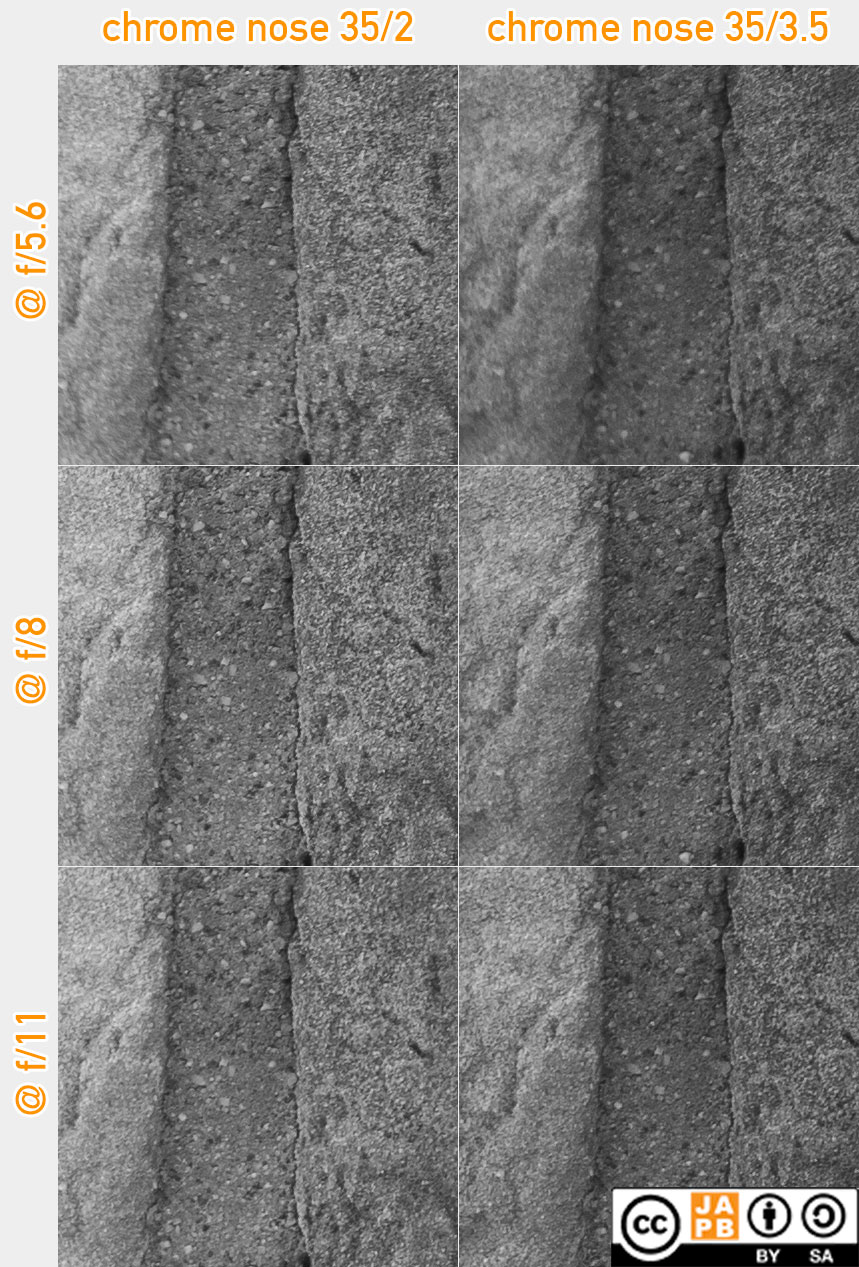
Short analysis: In the absolute corners we finally see results that are not essentially flawless. Here the 35/3.5 retains its edge in terms of contrast, but the 35/2 has clearly better definition.
Collected analysis: In this duel the severe yellowing of the Canon chrome nose 35/2 takes centre stage. I have no problems in tweaking the B&W conversion until the 35/2 shows a clear win also in terms of contrast, but that is beside the point.
It would be interesting to be able to include a non-yellowed (treated) sample of the concave 35/2, but such a sample was sadly not available. As it stands today, we can state that the 35/2 has tremendous definition, but needs some serious work in post to reach its full potential. The 35/3.5 on the other hand puts in a very convincing performance (for what essentially was the budget offering) and (within the confines of these apertures) only falters in the absolute centres when not stopped down past f/5.6.
Are faster lenses sharper? Inconclusive.
Test 5: Two 35 mm Contax Zeiss lenses.
In the lineup of lenses co-developed by Carl Zeiss (West Germany) and Yashica (Japan), there are two 35 mm focal length lenses: a blazingly fast f/1.4 and a pedestrian f/2.8 (the 35/2 became a fixture in Zeiss’ lens lineup only later).
| Mainline specs | subtype | optical design from | sample produced | Length x diameter | Weight | Elements / Groups | Data sheet |
| Carl Zeiss 35/1.4 | AEG | 1976 | 1976 | 75,8 x 70,9 mm | 511 g | 9e / 8g | here |
| Carl Zeiss 35/2.8 | MMJ | 1976 | 1994 | 46,0 x 63,1 mm | 235 g | 6e / 6g | here |
Talk about David and Goliath. One lens is four times (two stops) brighter that the other (on the other hand, it does weigh more than double). Here we are pitching a 35 mm lens with a bog-standard f/2.8 maximum aperture against one of the few 35 mm f/1.4 lenses ever designed for film SLRs. Unfair? Yes, and entirely in keeping with the spirit of this comparison. Let’s move on.
This time I set up my tripod in front of a boring wood-panelled shed and let it rip. The image below shows the big picture (as well as location of the crops).
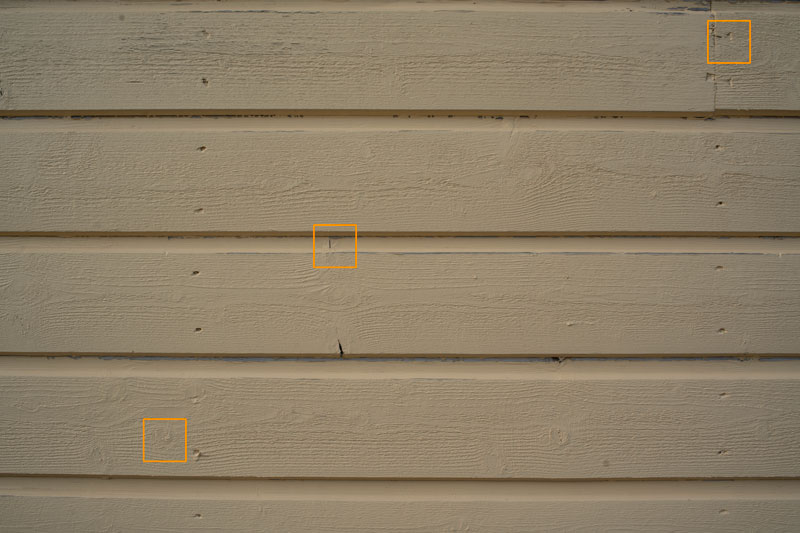
Centre crops
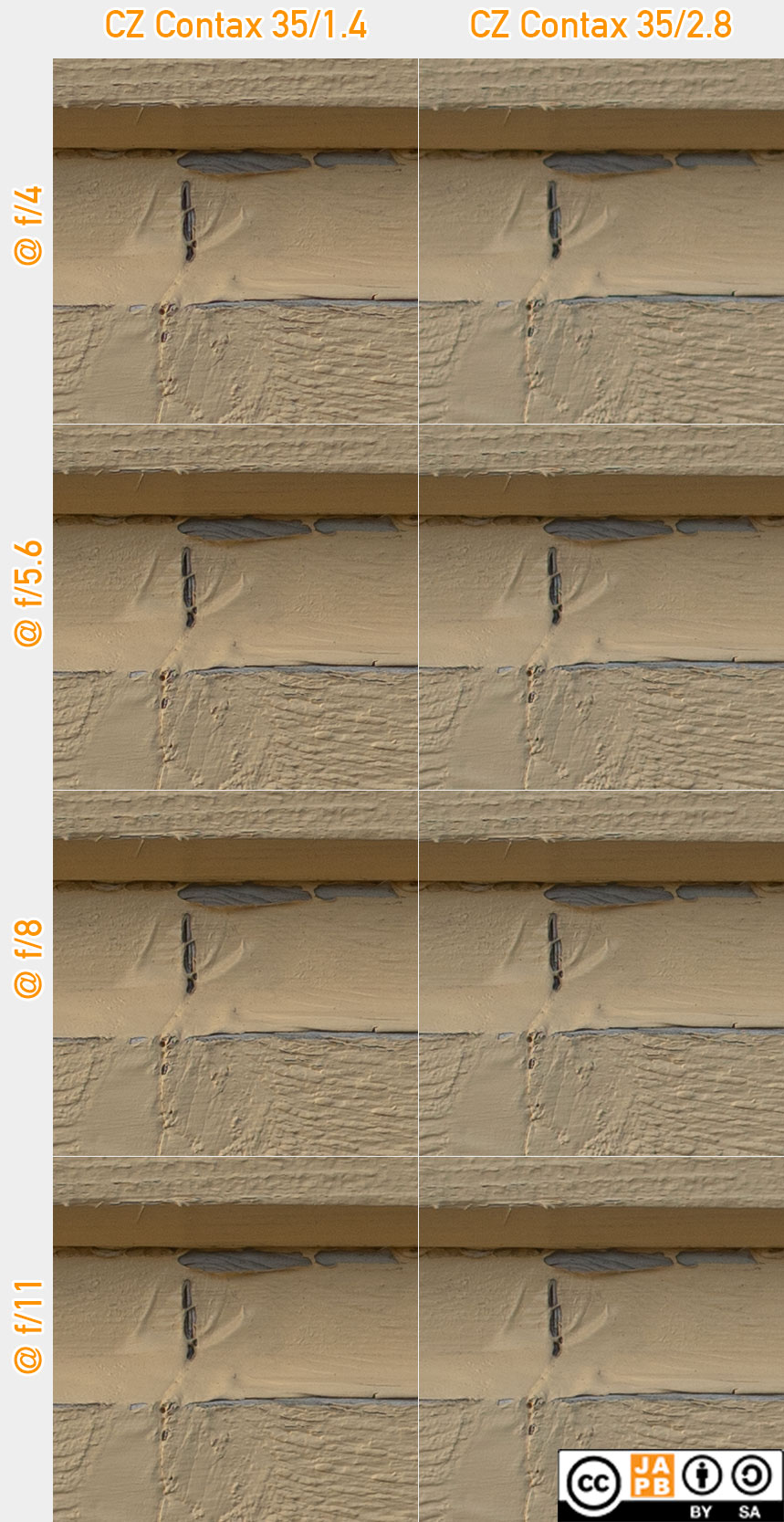
Short analysis (more thorough later): In terms of definition and contrast, both these lenses show very good centre performance stopped down. Interestingly, I find myself drawn to the crops from the 35/1.4 because I feel there is a lifelike plasticity to them (the elusive 3D-pop?) that is lacking from the crops from the 35/2.8, but I have a hard time quantifying the difference in terms of definition or contrast. There is also a slight difference in colour tone, but that was likely8 caused by an – at the time – imperceptible change in the ambient lighting.
Border crops
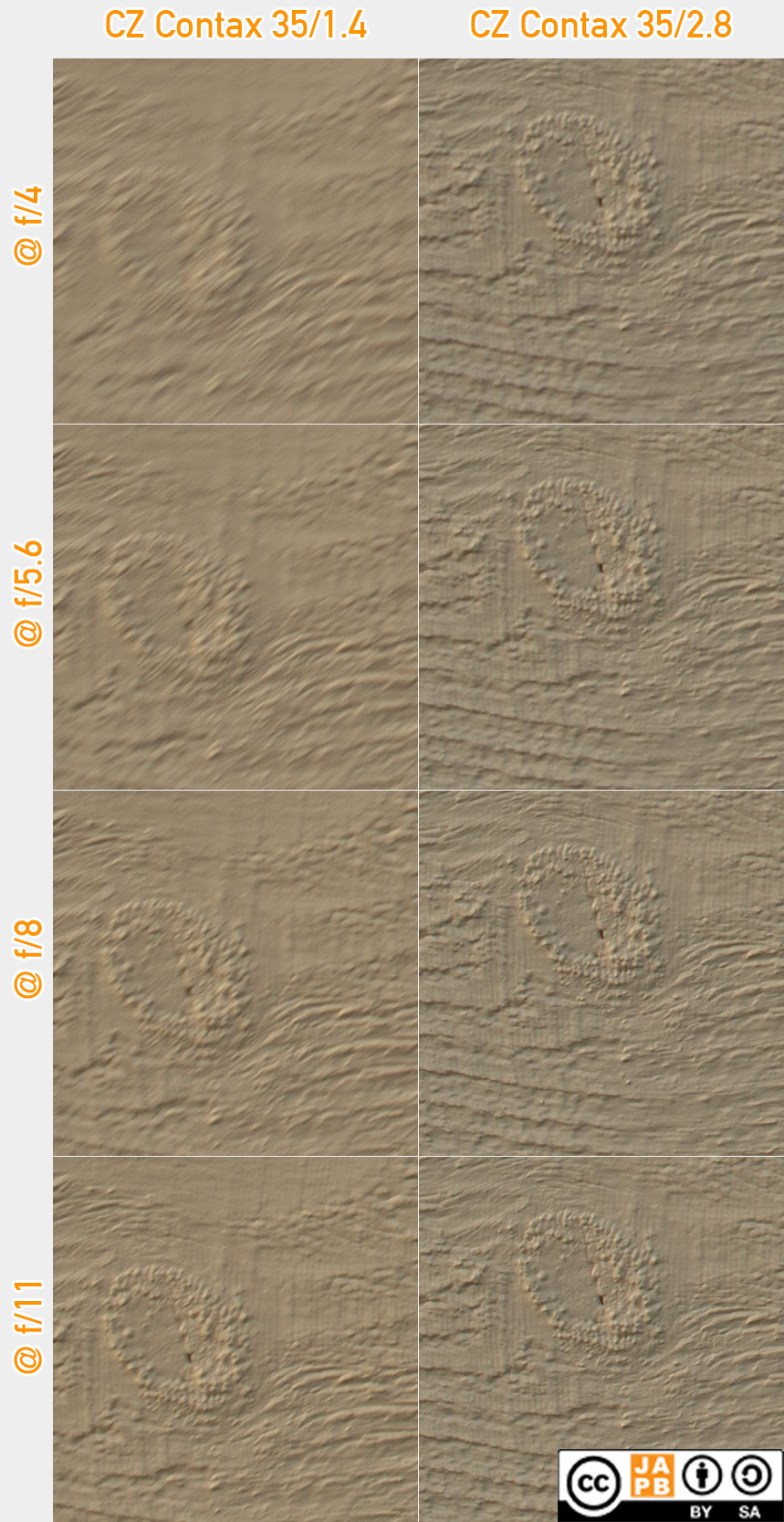
Short analysis: In the border areas it is abundantly clear that the slower lens is sharp, whereas the faster lens behaves as if sharpness outside of the image centre simply is something that it does not think is important. The 35/1.4 Distagon consistently shows weaker contrast and weaker definition than its slower sibling. There is simply no contest.
Corner crops
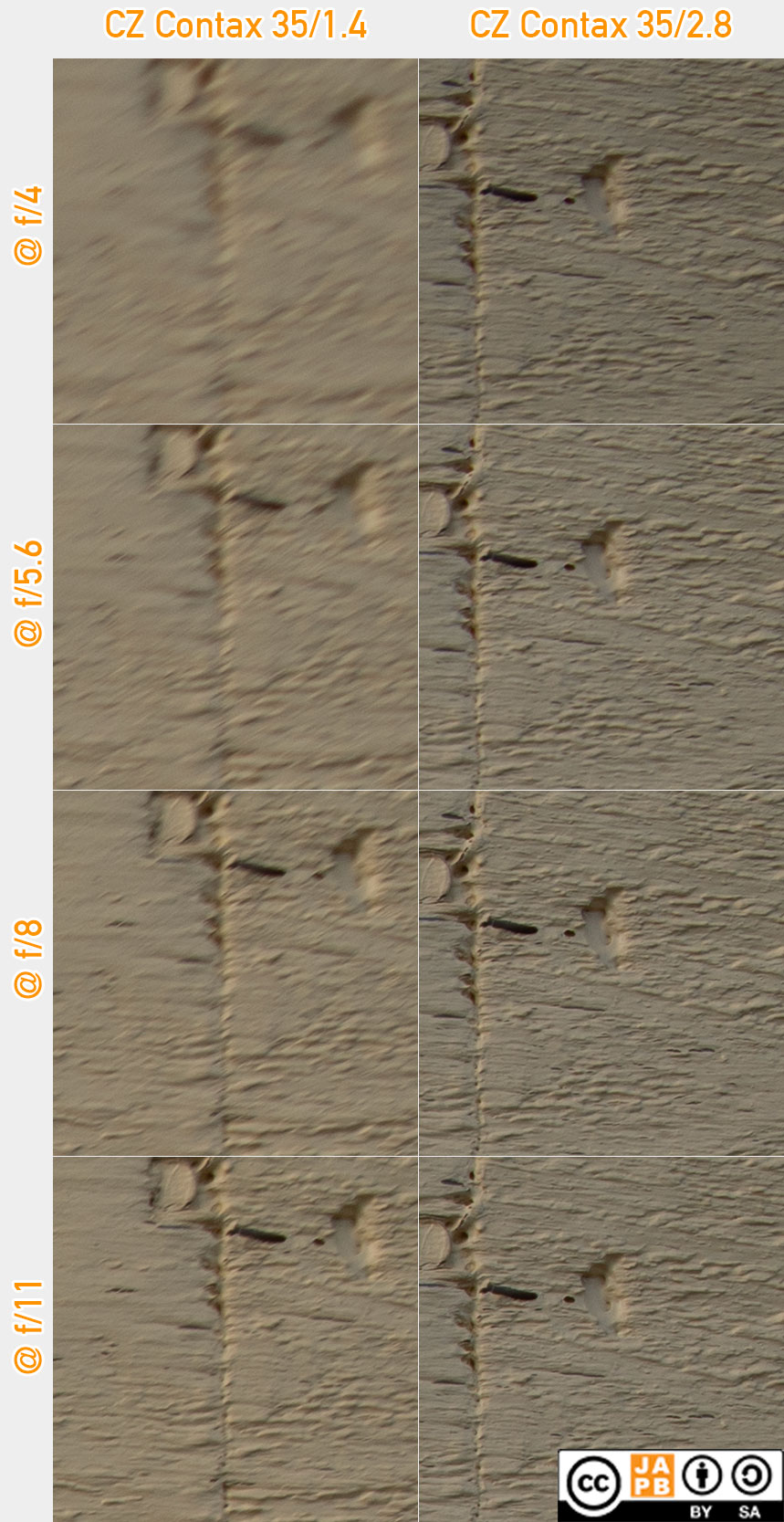
Short analysis: If you expected or hoped the 35/1.4 to recover in the corners, you’re sadly to be disappointed. To be clear, even at f/11 the faster lens does not offer the corner-to-corner sharpness of its two stops slower sibling.
Collected analysis: In all but the centre crops, the slower lens wipes the floor with the faster lens. Very likely we’re dealing with a lens where the designers simply decided to sacrifice sharpness outside of the image centre on the altar of some other goal. That other goal is likely not the very large maximum aperture alone (Nikon, above, already showed earlier that it is possible to design a 35/1.4 that is reasonably sharp across the frame at medium apertures).
Are faster lenses sharper? Based on this test, that’s a definite NO.
Test 6: Two 85 mm Contax Zeiss lenses.
Hot on the heels of comparing two Contax/Yashica era Carl Zeiss 35 mm lenses – one with a maximum aperture of f/1.4 and another with a maximum aperture of f/2.8 – we’re doing the same again, but this time at the considerably narrower field of view corresponding to the ≈85mm focal length.
| Mainline specs | subtype | optical design from | sample produced | Length x diameter | Weight | Elements / Groups | Data sheet |
| Carl Zeiss 85/1.4 Planar | MMJ | 1976 | 1994 | 64,4 x 71,1 mm | 609 g | 6e / 5g | here |
| Carl Zeiss 85/2.8 Sonnar | AEJ | 1976 | 1983 | 46,4 x 61,9 mm | 230 g | 5e / 4g | here |
Again, one lens is four times (two stops) brighter than the other (on the other hand, it does weigh more than double). Here we are pitching a relatively slow 85 mm lens against an 85 mm f/1.4 lens from one of the most legendary manufacturers in the world of photography. Moreover, while one (the 85/1.4) utilises a modified Planar design to achieve its high brightness, the other lens’ (the 85/2.8’s) design is a derivative of the (in its time) groundbreaking Sonnar design. Entirely in keeping with the spirit of this comparison, we’re looking for difference, not similarity.
I’ve always liked tele lenses in landscape work. This time I wanted to see what these two lenses offered in that regard (but if you read on, we’ll compare these lenses at portrait distances as well). The image below shows the big picture (as well as location of the crops).
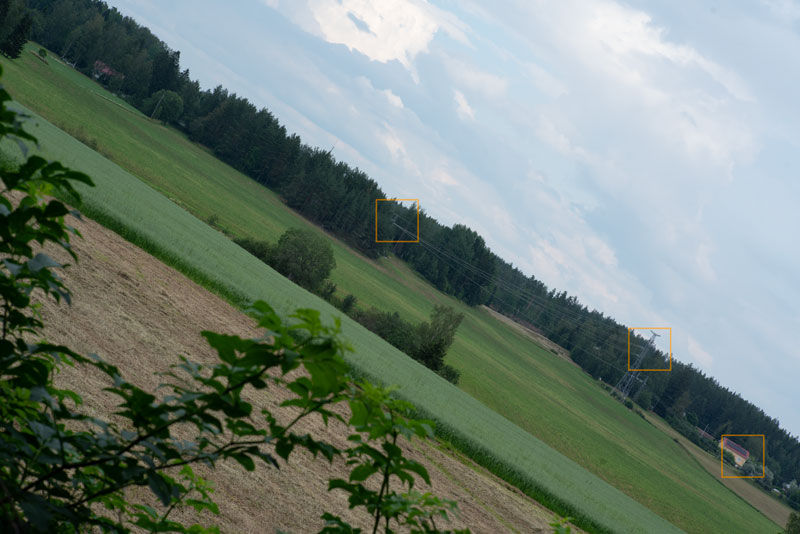
Centre crops
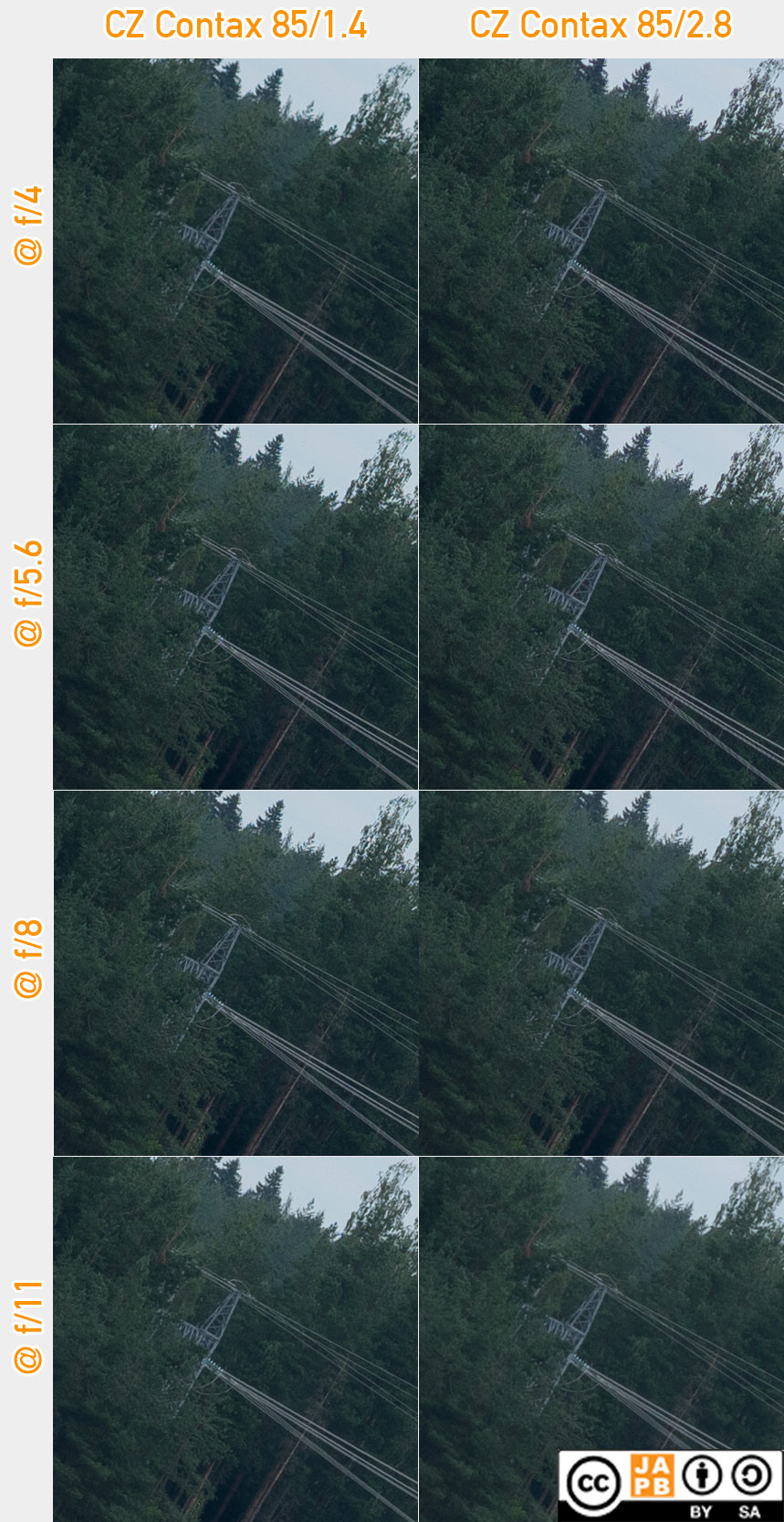
Short analysis: All in all, these centre crops are of very even quality. Going beyond 1:1 magnification it is possible to discern a small difference in sharpness that at f/4 and f/5.6 is to the advantage of the 85/2.8 (Sonnar) and at f/8 and f/11 is to the advantage of the 85/1.4 (Planar). This might seem contra-intuitive as at f/4 the Sonnar is only stopped down by one stop, whereas the Planar is stopped down by three stops.
On the other hand, Sonnar designs have the reputation of being very well corrected from wide open (also implying that there might not be so much room for improvement?).
Border crops
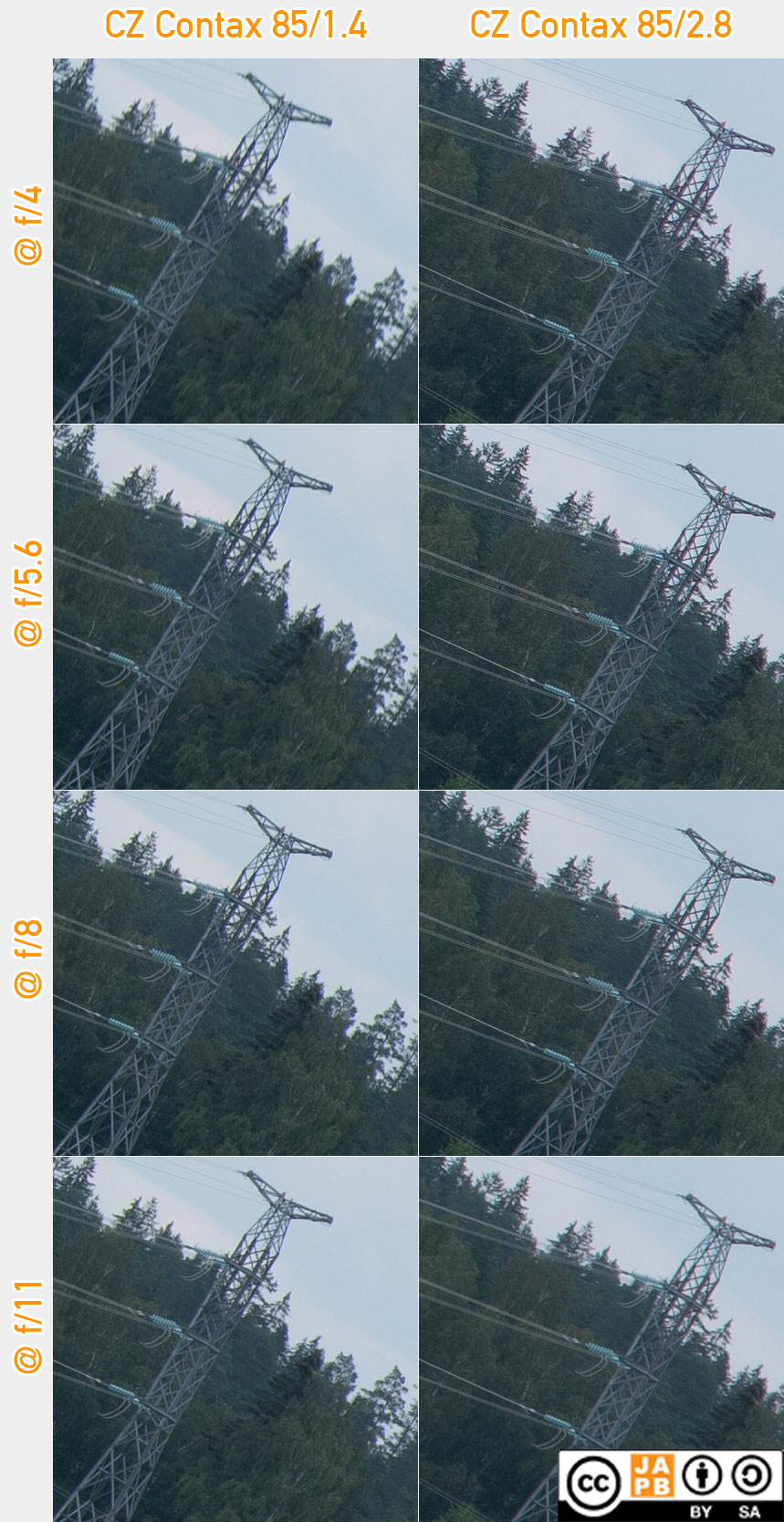
Short analysis: Exiting the centre zone the differences become more pronounced. At f/4 and f/5.6 the Sonnar clearly wins over the Planar (even though the Sonnar does have some issues with chromatic aberrations), but as apertures close down, the difference gradually disappears. At f/11 there is no real difference (in terms of sharpness).
Corner crops
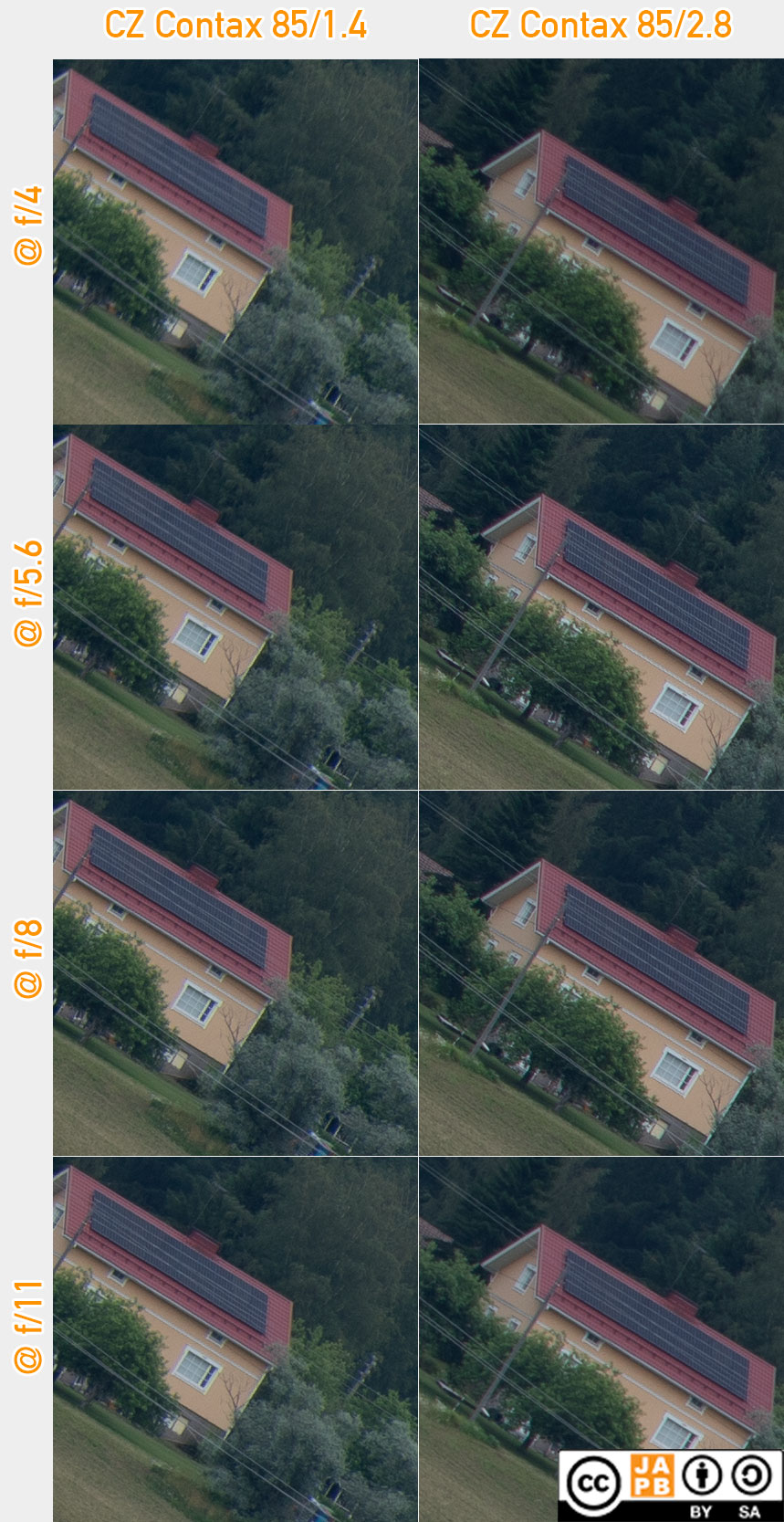
Short analysis: The story here would otherwise be the same as above (at f/4–f/8 the Sonnar wins until the Planar squeezes in a draw at f/11), but for the fact that in the absolute corners the Sonnar also struggles a bit at f/4. As a result, the winners are:
• at f/4 ==> draw
• at f/4 ==> Sonnar
• at f/8 ==> Sonnar
• at f/11 ==> draw
Collected analysis: First off, these two lenses are a perfect example of that the posted focal length of lenses often is only an approximation. As can be seen from the photos above, the Planar actually has a wider angle-of-view and also Carl Zeiss reports the Planar’s precise angle-of-view as 28° 30′ whilst that of the Sonnar is 27°. In terms of focal length correspondence, those numbers would be 84,8 mm (Planar) and 87,6 mm (Sonnar). The difference is large enough that Zeiss would have been more than justified in calling the Sonnar a 90/2.8.
But on the actual topic of sharpness, this test does not confirm the “faster lenses are sharper stopped down” hypothesis. On the contrary, under no circumstances does the Planar provide a clearly sharper image whereas the Sonnar often is noticeably sharper when moving out from the image centre and into the f/4-f/8 range.
Are faster lenses sharper? No. Not based on these images.
On the other hand, I expect someone to defend the Planar by pointing out that 85/1.4 lenses are rarely designed for shooting beyond portrait range so…
The two 85 mm Contax Zeiss lenses at portrait distance.
Another day, another wall. This time I had the lucky break that a jumping spider was stalking its prey (the prey got away) close to my original focus point (I only discovered the spider when analysing the images). Therefore that spider made for a perfect centre motif in the centre crops (some motion blur in f/8 and f/11 images).
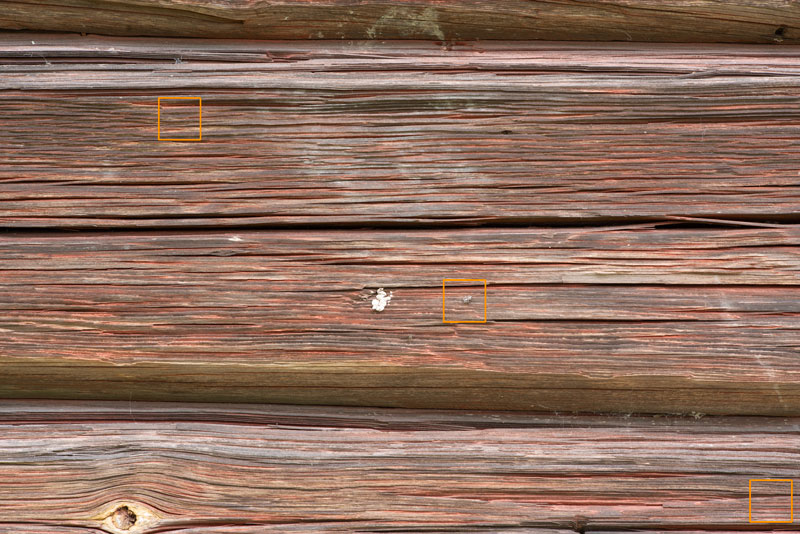
Centre crops
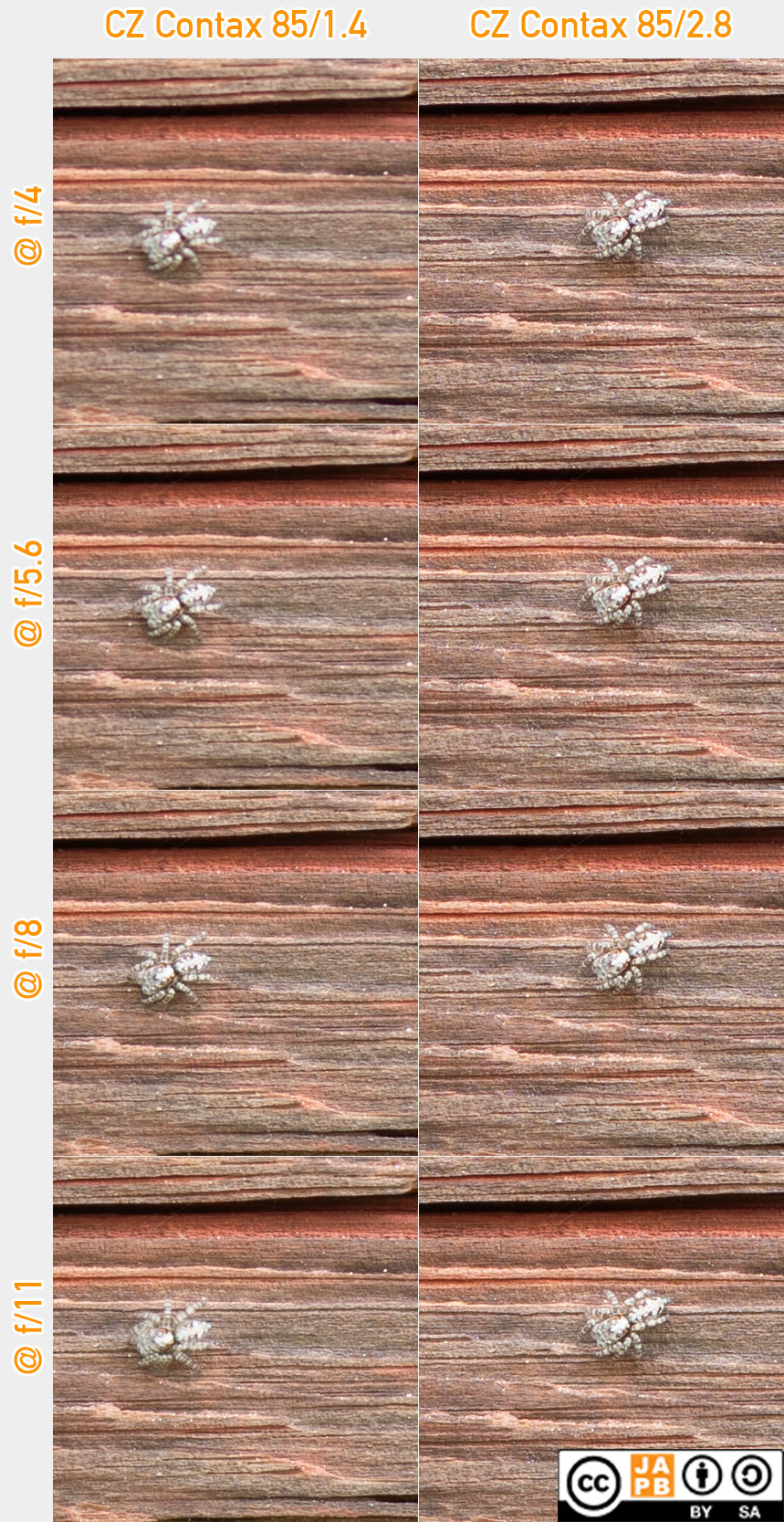
Short analysis: The Sonnar is very consistent in its performance. Was there not minute movement in the spider, I could have mistaken these for four identical images. The Planar improves with every stop down, but does not reach the sharpness of the Sonnar.
Border crops:
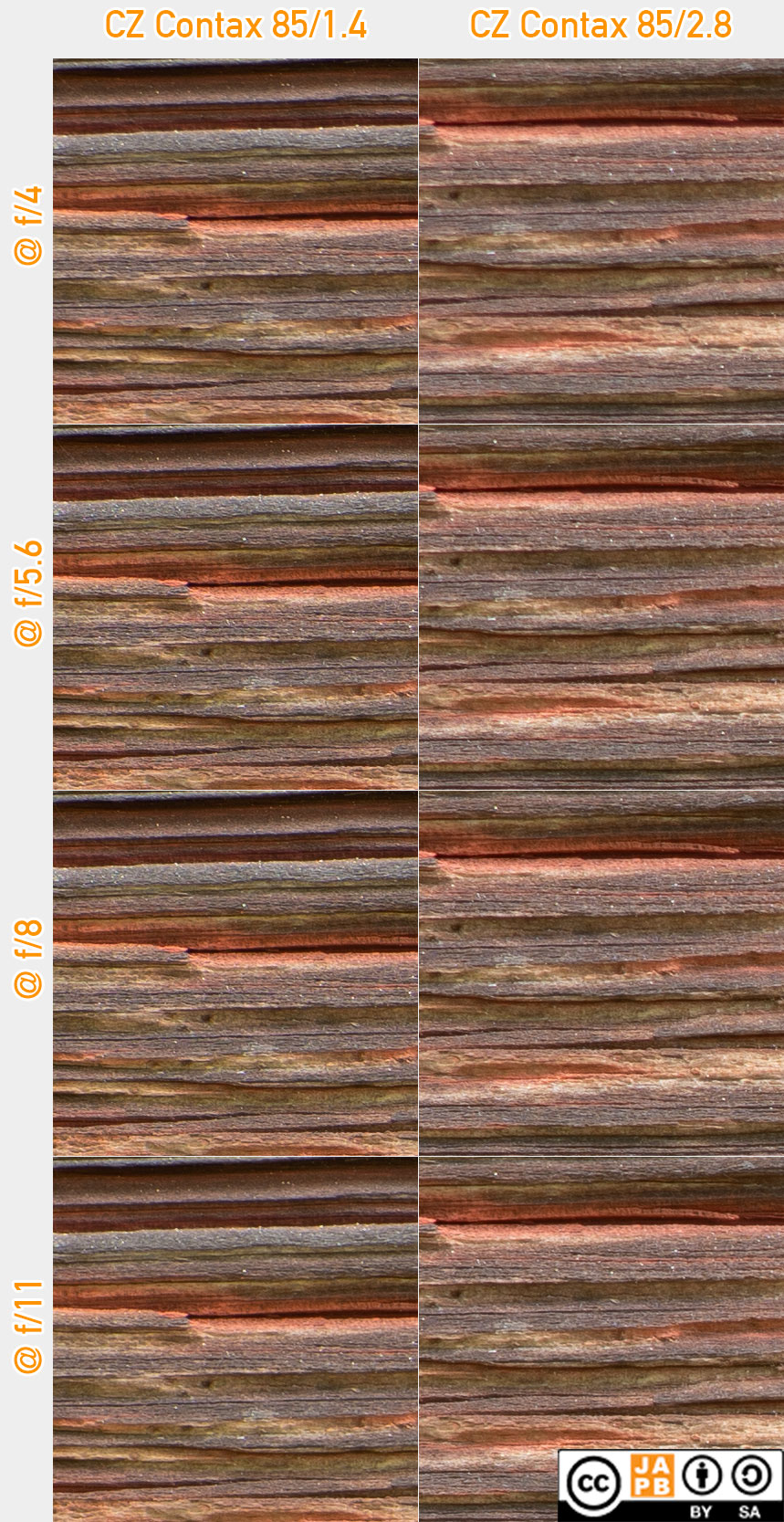
Short analysis: Here the tables are (a bit surprisingly) turned. Both series are good, but the Planar outperforms the Sonnar at f/4 and f/5.6 while at f/8 and f/11 they are similar (but different).
Corner crops
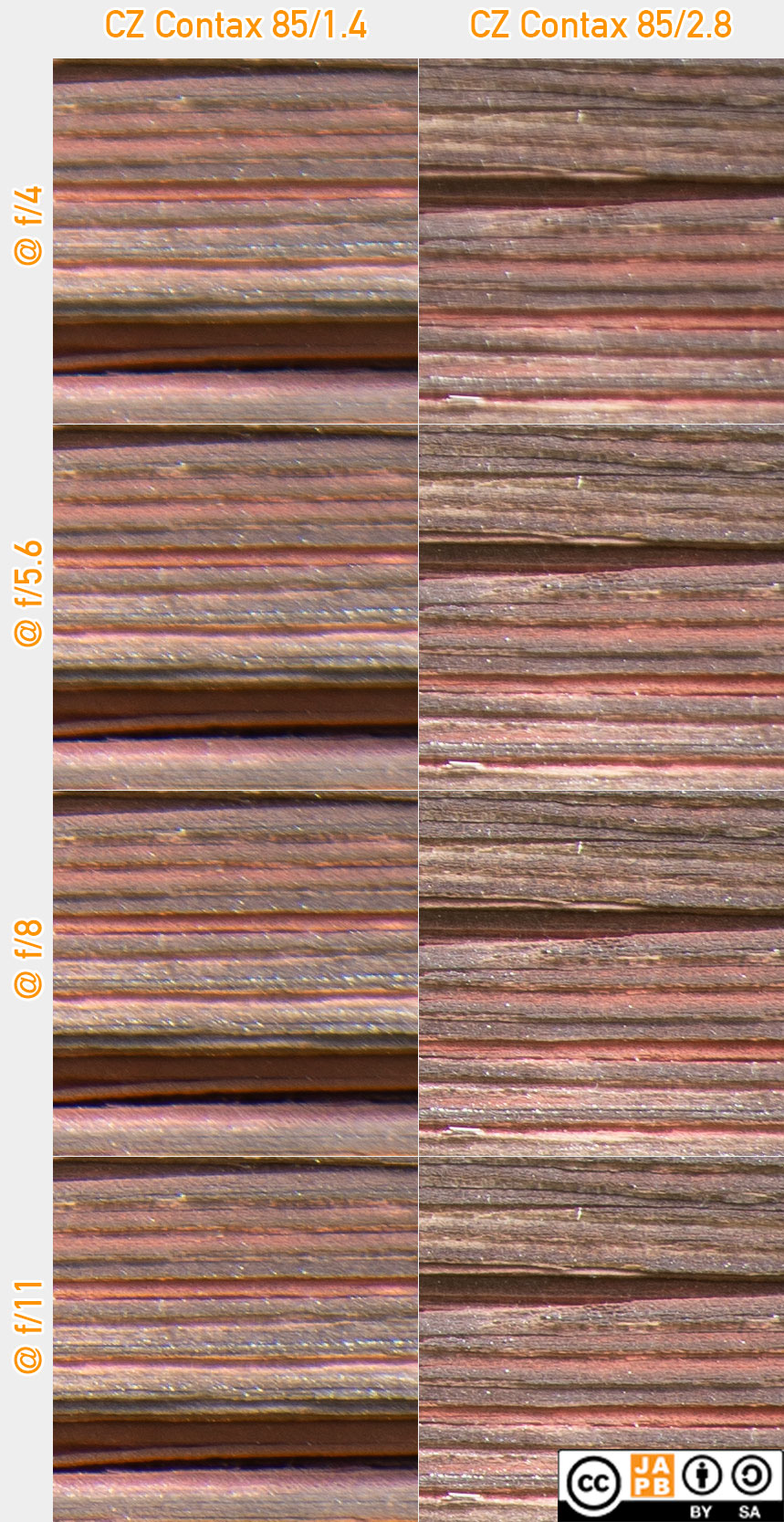
Short analysis: The corner crops (and these are extreme corners) show the limitations of both lenses. The Sonnar needs to be stopped down to f/5.6 (preferably f/8) to show sharp corners, while the Planar does not really get the corners to be sharp in this aperture range (although f/8 and f/11 begin to be decent).
Collected analysis: Sometimes the focusing distance makes the difference, because it does make sense to optimise a lens’ performance for the distance where you expect the lens to be most used. In this case however the Planar does not get magically sharper just by being focused at portrait distance.
Yes, I know that clinical sharpness is superfluous (indeed, often undesired) in a portrait lens, and that the Planar might well have been designed for sharpness. Even so, that would just be another argument against the ‘faster lenses are sharper at medium apertures’ argument.
Are faster lenses sharper? No. Clearly the 85/2.8 Sonnar is overall sharper than the 85/1.4 Planar.
Test 7: Three Olympus standard lenses.
I happen to have a series of three similar-era9 Olympus standard lenses, so I set up a tripod and pointed each in turn at a dandelion prepared to spread its seeds.
| Mainline specs | Nikon F subtype | design introduced | Length x diameter | Weight | Elements / Groups | Data sheet |
| Olympus OM 55/1.2 | Ai | 1972 | 47,1 x 64,8 mm | 308 g | 7e / 6g | here |
| Olympus OM 50/1.4 | Ai | 1972 | 39,7 x 59,6 mm | 229 g | 7e / 6g | here |
| Olympus OM 50/1.8 | Ai | 1972 | 30,9 x 60,1 mm | 175 g | 6e / 5g | here |
I originally shot this this trio of lenses with the thought of analysing also other aspects than sharpness (namely bokeh and flaring) therefore. The dandelion scene was intended to study flaring, hence only the centre crop will be usable for studying sharpness. While it does not give the same level of information as the other tests, I will include in anyway.
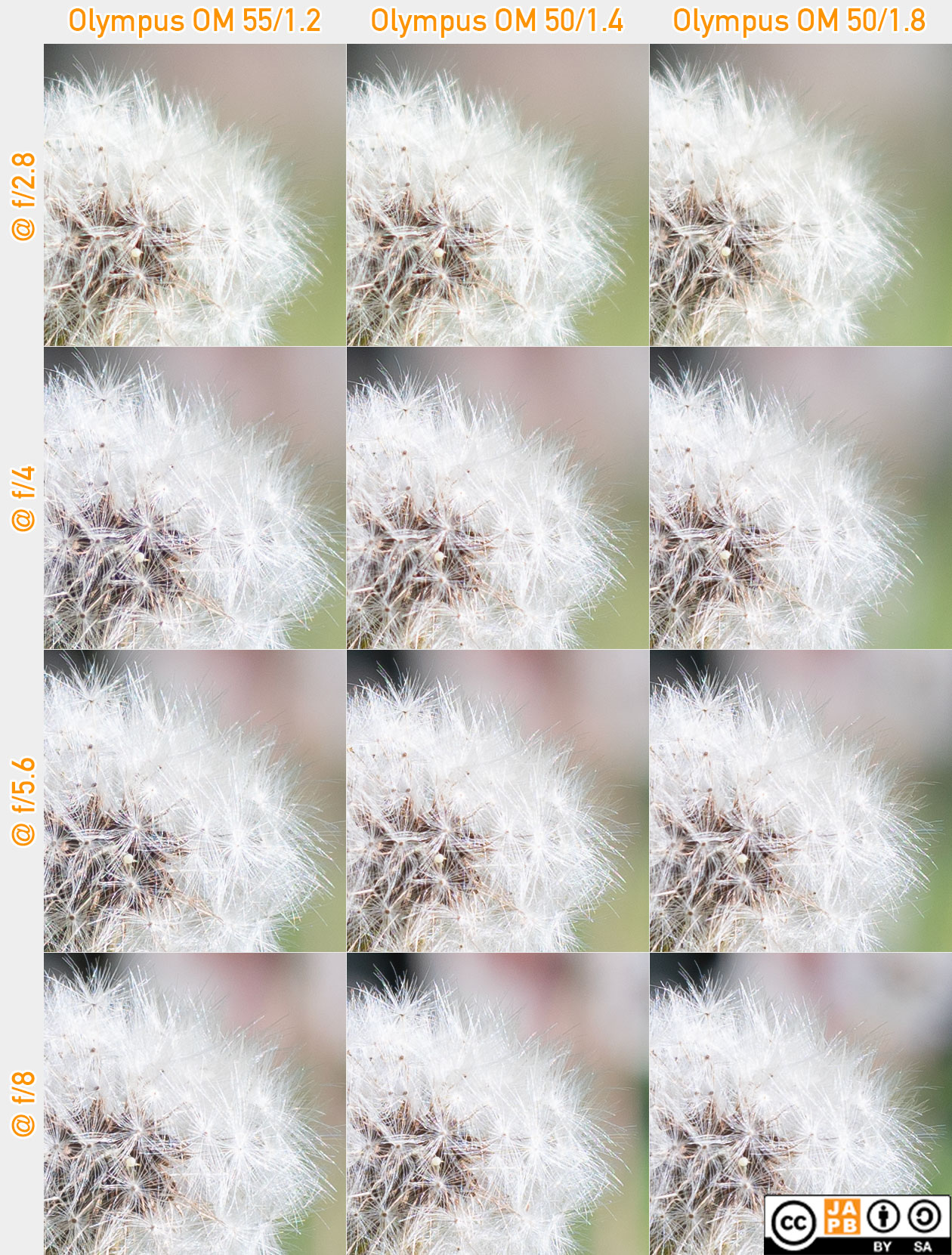
(open image in new tab for larger image)
Analysis: These are all centre crops, making it a bit of a boring (and not very thorough) test. Importantly, the differences are really, really small. That said, in all cases the f/1.2 holds a small advantage over the f/1.4, while the f/1.8 is least good.
Are faster lenses sharper? Yes. Mildly and considering the limitations of this test.
Summary conclusions:
Are faster lenses sharper (than slower lenses) when used at medium apertures?
It depends on the lenses. While we have seen some tests above where the answer is a resounding YES (Nikkor K 28/2 vs. Nikkor K 28/3.5), we have also some tests where the answer is an equally resounding NO (Carl Zeiss (Contax) 35/1.4 vs. 35/2.8 and Carl Zeiss (Contax) 85/1.4 vs. 85/2.8) as well as several other tests where the result is either a weak yes or weak no, or where the test is simply inconclusive. In these 7 sets of lenses (and 9 tests10) there is also no general trend that can be reasonably identified (the numbers of tests are simply too small for any conjectures to be more than wild-ass guesses).
For instance, if I would say that “the faster lenses are sharper -rule seems to hold in standard/normal lenses” I would base that judgment on only two tests, both of which showed a relatively weak affirmative result (because also the slower lenses were also very good). If we were to add one test where the result would indicate a clear adverse result, our statement (above) would turn out to be a waste of space.
Is it likely that if we tested more lenses, a clearer result would emerge? Yes and No.
Yes, in the sense that if we could a) identify all pairs or trios (or more) of comparable lenses (remember the criteria outlined above); b) systematically test a representative sample of those sets of lenses11; c) after which we could say that whatever trends we might have identified would reasonably apply to all lenses.
No, in the sense that even this short test shows that the results run the gamut. In other words, even this small test shows that we will likely have results that are all over the place, and that we (even if we tested all the comparable lenses in the world) will likely find no generalisable rule that we could set out as a comfortable basis.
And this is typically also why empiricism has not outright won agains rationalism. Reality simply often is way too messy for empirical evidence alone to be able to produce a clear rule or absolute law.
Why is that? Should optics not follow the laws of nature?
While optics follow the laws of nature, the designing of optics follows the whims of the human designers and marketing managers. Designing is the activity that determines how something ought to be, and the practice of design is largely about setting priorities and accepting tradeoffs. Lens design is a hellishly tricky business, because of exactly those tradeoffs. And here we can (now that we have more than anecdotal evidence) cycle back and try to see if logic could help us make sense of the situation.
Rationalism strikes back
Let us take one example: This test included 6 similar era Carl Zeiss designs in three focal length ranges. In one case (50) the faster lens was slightly sharper (stopped down) than its slower sibling, in two other cases (35, 85) the slower lenses won with considerable margins. Why is that? There is no way to know for sure but I have a theory I would like to forward:
In the case of the 50/1.4 vs. the 50/1.7 the designers have wanted to make the fast fifty not only fast, but also retain its ability to serve the role fifties have held for most of the history of SLR photography: that of the jack of all trades. In other words, they have decided not to sacrifice the 50/1.4 lens’ versatility for the sake of any one thing. As is also evident in the JAPB comparison of fast fifties, the Carl Zeiss Planar 50/1.4 is a very solid all-round performer, characterised by a lack of key weaknesses.
Not so in the case of the 85/1.4 or the 35/1.4. The 85/1.4 is first and foremost a portrait lens, and in a test that focuses on corner to corner sharpness stopped down, it simply is competing in the wrong arena. Even so, it does have the inherent capabilities that allow it to put up a fight.
The same is true with the 35/1.4: It also is a specialty lens (albeit not intended for traditional portraiture), with an added twist: back in the mid 1970s designing a 35/1.4 still taxed lens designers (and their computation capabilities) to their limits. As a result the 35/1.4 – even with the inclusion of one aspherical lens element – struggles mightily in resolving fine detail outside of the image centre12.
So where does this leave you/us? While we are not any closer to finding out whether faster lenses are sharper, we have learned a lot of details, and are a lot closer to understanding. Especially we’re closer to understanding why there likely cannot be a clear yes or no answer to this question. It is, in the end, not a lens’ maximum aperture that determines whether the lens will be sharp stopped down to medium apertures.
So my theory is that the question you need to ask yourself: How high up on the list of priorities of the lens’ designers was sharpness likely to have been.
Footnotes
- There is a related argument that high element-count lenses have a negative effect on micro-contrast / ‘3D-pop’. ↩︎
- This is a very coarse and simplified explanation and you are welcome to read this more detailed description of the viewpoints and their bases (Courtesy of Stanford University). ↩︎
- Besides the points below, there are a number of points that any rationalist would want me to mention, but I’ll skip them anyway. ↩︎
- There are various other duos or trios I could have included, but I’ve focused on the 28–85 mm range and on those situations where the comparability of the lenses is solid. For instance, I would have a 1.7–1.4–1.2 -set of Minolta fifties, but here the 1.2 is an MD lens whereas the others are MC (older), so it would not be a strictly comparable set. The same applies to my 1.8–1.4–1.2 set of Konica lenses. ↩︎
- Please note: there are two versions of the Nikkor Ai 35/2.8: This 6 element design introduced 1977 and a later ‘new’ 5 element design introduced 1979. ↩︎
- Technically the lens tested here is the version with silver ring trim introduced 1981, but the 1979 and 1981 versions are optically identical. ↩︎
- Wide-angle lenses originally designed for film rangefinders and other short flange focal distance systems can produce strongly oblique rays that typically produce corner smearing. As this lens is an SLR lens, that explanation is unlikely. ↩︎
- I’m not just guessing. There is a 1/3–1/2 stop difference in the recorded shutter speeds between the two lenses, so it is possible that the edge of a cloud has moved across the sun without me noticing it. ↩︎
- To be absolutely precise: All three lenses are early OM system lenses (pre multicoating), but the 50/1.8 is a ‘silver nose’ lens whereas the two other are later, ‘black nose’ lenses. ↩︎
- Actually, every set of lenses was tested several times, so there are 16 sets of tests. I simply saved myself the work of putting together collages if the other tests added no new information). ↩︎
- In classical statistics we would start with the population size, the expected margin of error and the confidence level we want to achieve. Problematically the share of samples (vs. population size) is not a constant. With a population size of 1000 you would need to test a sample of ≈280 to be able to be sufficiently confident (MoE 5%; CL 95%) in your result, whereas for a population of only 100, you would need to sample ≈80 for the same level of confidence. (This obviously assumes that the population is normally distributed and that sample variation plays no role, but you have to start somewhere) ↩︎
- Incidentally, this is something that one can deduce even from looking at the MTF charts Zeiss published for the lens. ↩︎
